Maidenhair ferns (Adiantum species) are some of the most elegant and delicate ferns you can find. Their airy, finely divided leaves and glossy black stems make them a stunning addition to any plant collection. With about 250 species, there’s plenty of variety to explore. Here are 50 fascinating types of maidenhair ferns, plus a care guide at the end to keep them thriving.
Contents
- 1 Types of Maidenhair Ferns
- 1.1 Adiantum capillus-veneris (Southern Maidenhair Fern)
- 1.2 Adiantum pedatum (Northern Maidenhair Fern)
- 1.3 Adiantum hispidulum (Rosy Maidenhair Fern)
- 1.4 Adiantum raddianum (Delta Maidenhair Fern)
- 1.5 Adiantum tenerum (Silver Dollar Maidenhair Fern)
- 1.6 Adiantum peruvianum (Peruvian Maidenhair Fern)
- 1.7 Adiantum trapeziforme (Giant Maidenhair Fern)
- 1.8 Adiantum microphyllum (Small-Leaved Maidenhair Fern)
- 1.9 Adiantum venustum (Himalayan Maidenhair Fern)
- 1.10 Adiantum fulvum (Golden Maidenhair Fern)
- 1.11 Adiantum concinnum (Elegant Maidenhair Fern)
- 1.12 Adiantum lunulatum (Crescent Maidenhair Fern)
- 1.13 Adiantum caudatum (Trailing Maidenhair Fern)
- 1.14 Adiantum macrophyllum (Large-Leaved Maidenhair Fern)
- 1.15 Adiantum latifolium (Broad Maidenhair Fern)
- 1.16 Adiantum edgeworthii (Edgeworth’s Maidenhair Fern)
- 1.17 Adiantum cunninghamii (Cunningham’s Maidenhair Fern)
- 1.18 Adiantum formosum (New Zealand Maidenhair Fern)
- 1.19 Adiantum shastense (Shasta Maidenhair Fern)
- 1.20 Adiantum capillus-junonis (Junon’s Maidenhair Fern)
- 1.21 Adiantum aethiopicum (Common Maidenhair Fern)
- 1.22 Adiantum cuneatum (Wedge Maidenhair Fern)
- 1.23 Adiantum scabrum (Rough Maidenhair Fern)
- 1.24 Adiantum aleuticum (Western Maidenhair Fern)
- 1.25 Adiantum aleuticum ‘Subpumilum’ (Dwarf Western Maidenhair Fern)
- 1.26 Adiantum aleuticum ‘Imbricatum’ (Dwarf Western Maidenhair Fern)
- 1.27 Adiantum aleuticum ‘Miss Sharples’ (Aleutian Maidenhair Fern)
- 1.28 Adiantum anceps (Double Edge Maidenhair Fern)
- 1.29 Adiantum atroviride (Dark Green Maidenhair Fern)
- 1.30 Adiantum bellum (Bermuda Maidenhair Fern)
- 1.31 Adiantum bessoniae (Besson’s Maidenhair Fern)
- 1.32 Adiantum chilense (Chilean Maidenhair Fern)
- 1.33 Adiantum diaphanum (Filmy Maidenhair Fern)
- 1.34 Adiantum erylliae (Erylliae Maidenhair Fern)
- 1.35 Adiantum excisum (Chilean Maidenhair Fern)
- 1.36 Adiantum flabellulatum (Fan-Leaved Maidenhair Fern)
- 1.37 Adiantum fragrans (Fragrans Maidenhair Fern)
- 1.38 Adiantum gertrudis (Gertrudis Maidenhair Fern)
- 1.39 Adiantum incisum (Incised Maidenhair Fern)
- 1.40 Adiantum jordanii (California Maidenhair Fern)
- 1.41 Adiantum malesianum (Malesian Maidenhair Fern)
- 1.42 Adiantum monochlamys (Hakone Maidenhair Fern)
- 1.43 Adiantum pearcei (Pearce’s Maidenhair Fern)
- 1.44 Adiantum philippense (Walking Maidenhair Fern)
- 1.45 Adiantum poiretii (Poiret’s Maidenhair Fern)
- 1.46 Adiantum reniforme (Lotus-Leaved Maidenhair Fern)
- 1.47 Adiantum silvaticum (Forest Maidenhair Fern)
- 1.48 Adiantum soboliferum (Soboliferous Maidenhair Fern)
- 1.49 Adiantum tetraphyllum (Four-Leaved Maidenhair Fern)
- 1.50 Adiantum thalictroides (Meadow-Rue Maidenhair Fern)
- 1.51 Adiantum tricholepis (Fuzzy Maidenhair Fern)
- 2 Care Guide for Maidenhair Ferns
Types of Maidenhair Ferns
Adiantum capillus-veneris (Southern Maidenhair Fern)
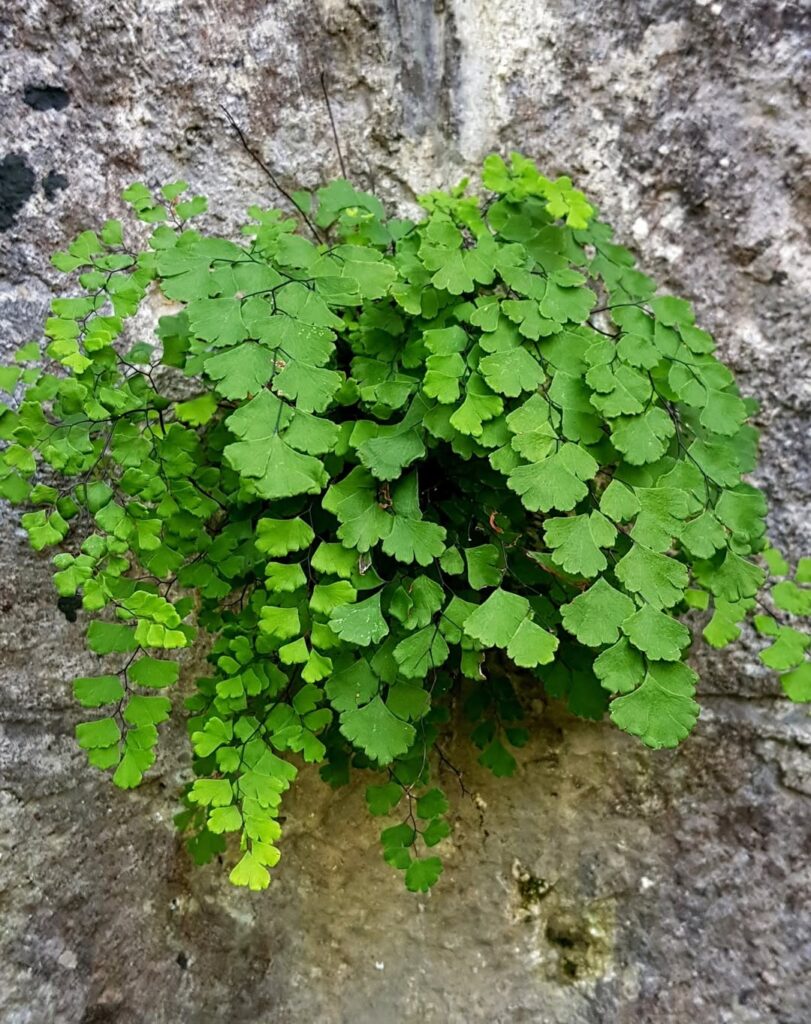
This is one of the most widespread maidenhair ferns, growing naturally in many parts of the world. It has thin, lacy leaves that droop gracefully and thrives in humid, shaded environments.
Adiantum pedatum (Northern Maidenhair Fern)
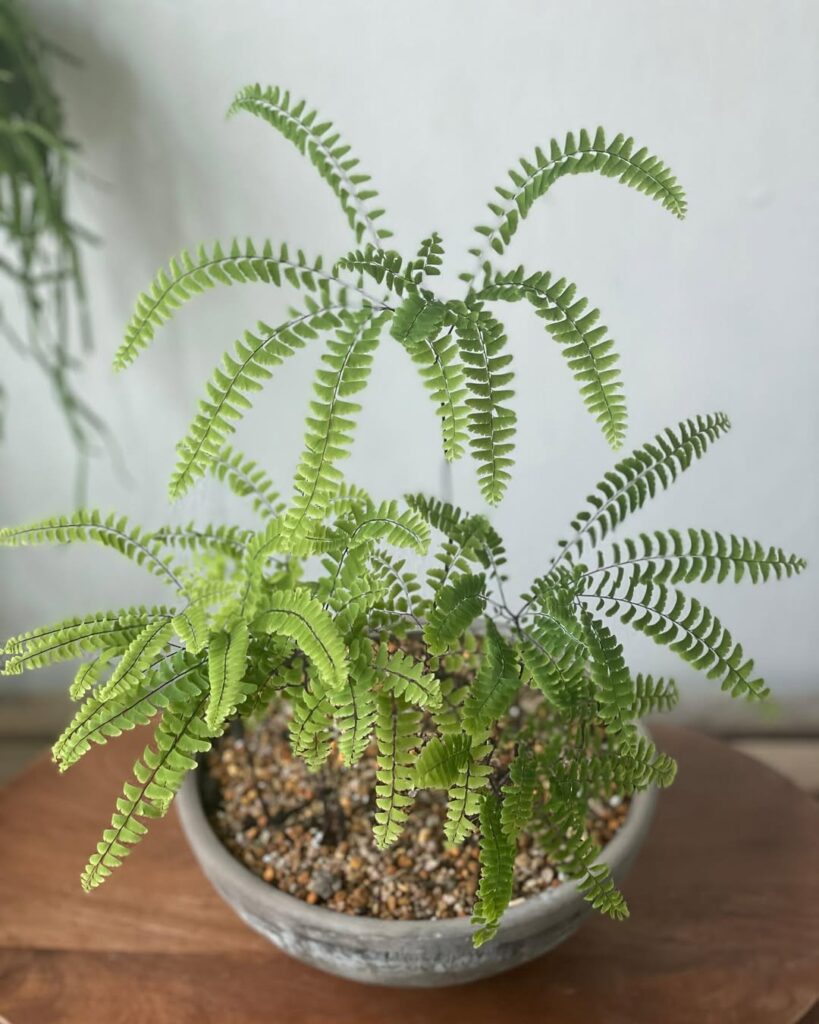
A delicate beauty with arching fronds arranged in a circular pattern. Its soft green leaves contrast beautifully with its dark stems, making it a favorite for woodland gardens.
Adiantum hispidulum (Rosy Maidenhair Fern)

This fern starts with a reddish tint on its new growth before maturing into a deep green. It’s compact and hardy, making it a great choice for indoor plant lovers.
Adiantum raddianum (Delta Maidenhair Fern)
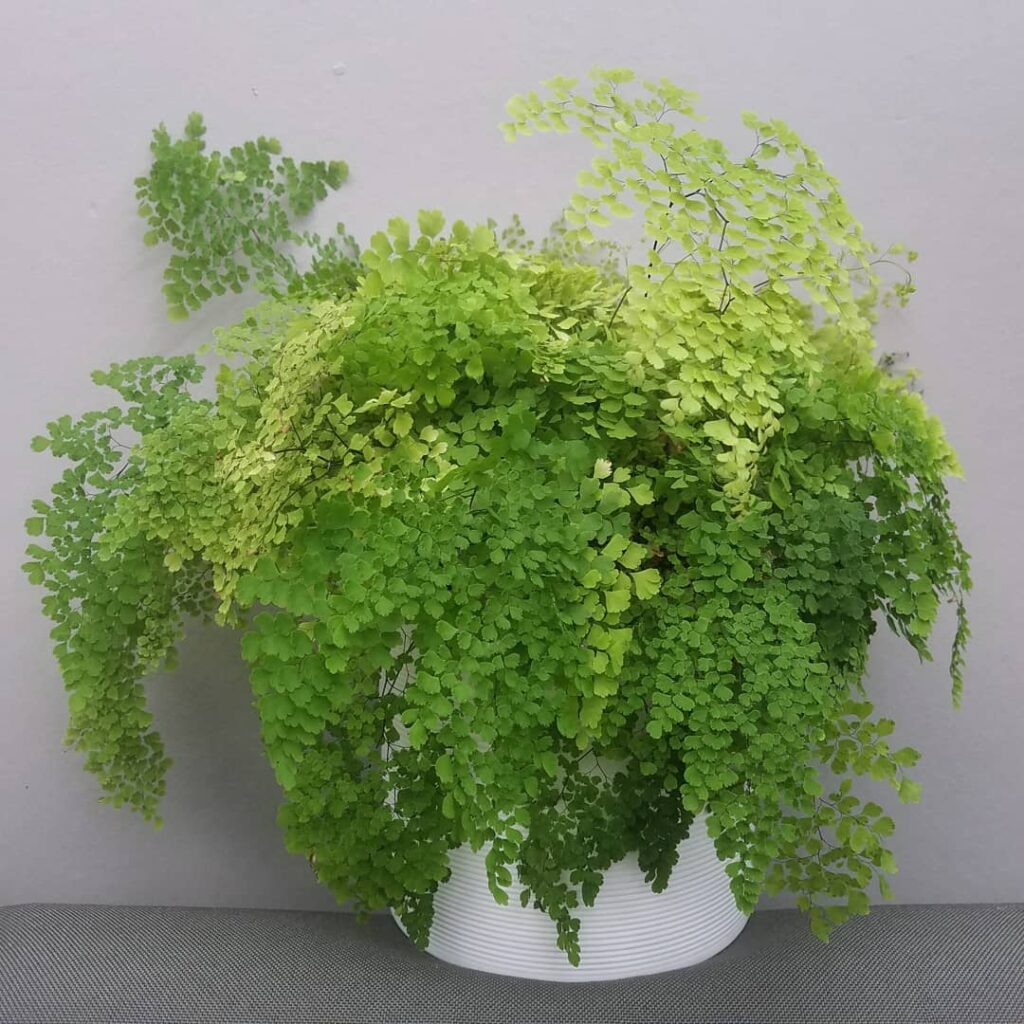
Popular in houseplant collections, this fern has feathery foliage that creates a soft, cascading effect. It grows well in humid environments and needs consistent moisture.
Adiantum tenerum (Silver Dollar Maidenhair Fern)
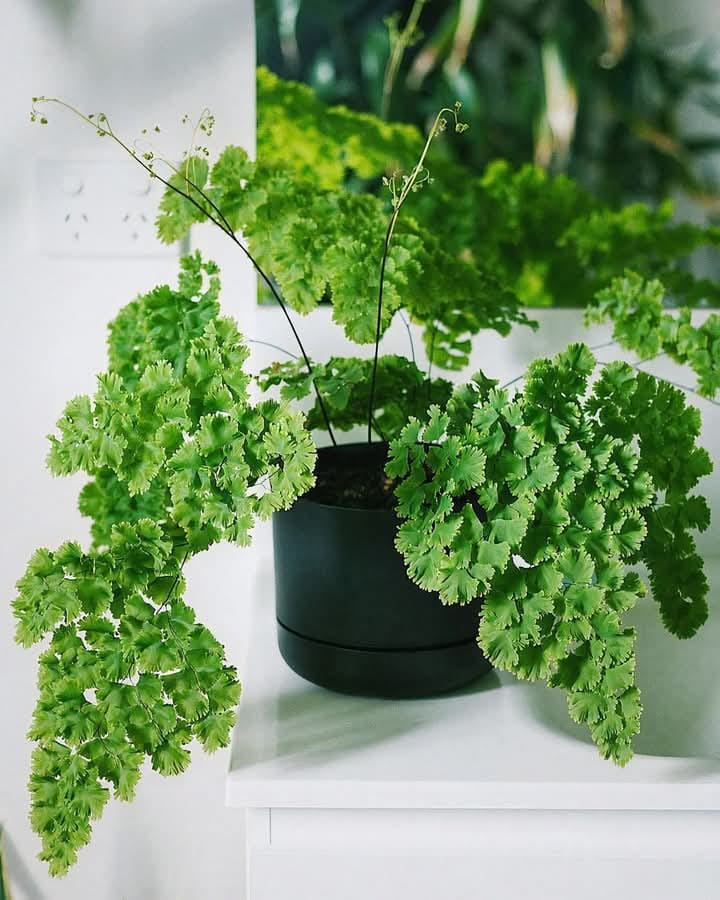
Characterized by its rounded, coin-like leaflets, this variety stands out for its silvery-green foliage. It requires high humidity and indirect light to thrive.
Adiantum peruvianum (Peruvian Maidenhair Fern)
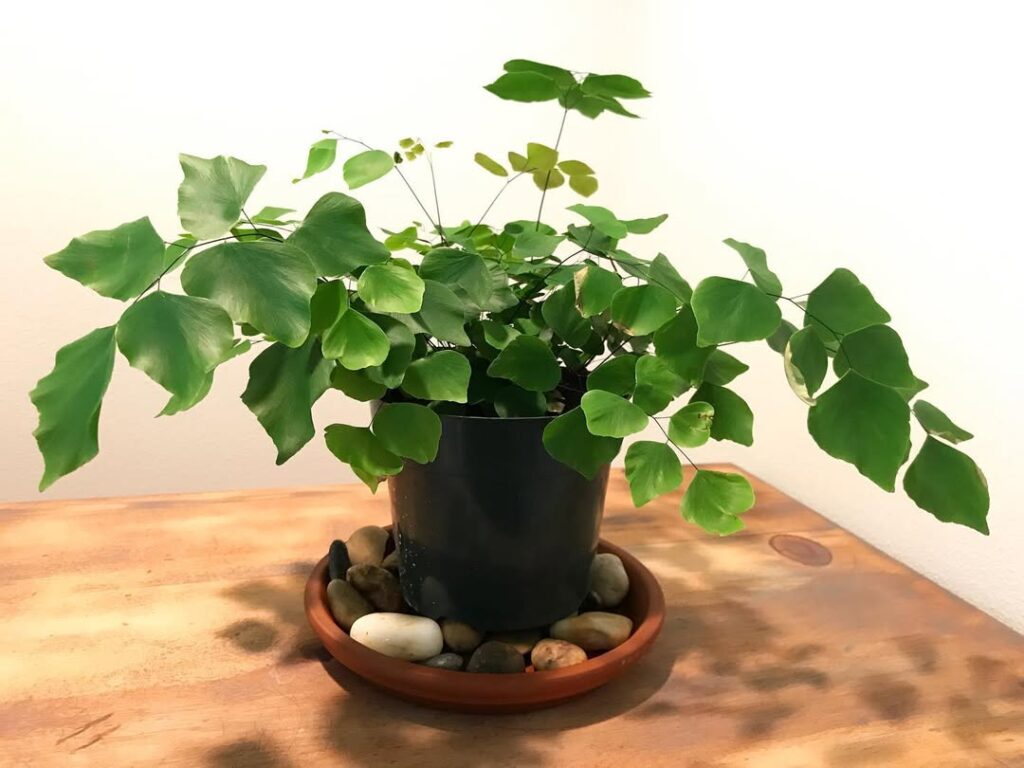
Larger than most maidenhair ferns, this species has broader leaflets and a striking, slightly glossy appearance. It grows well in shaded, moist conditions.
Adiantum trapeziforme (Giant Maidenhair Fern)
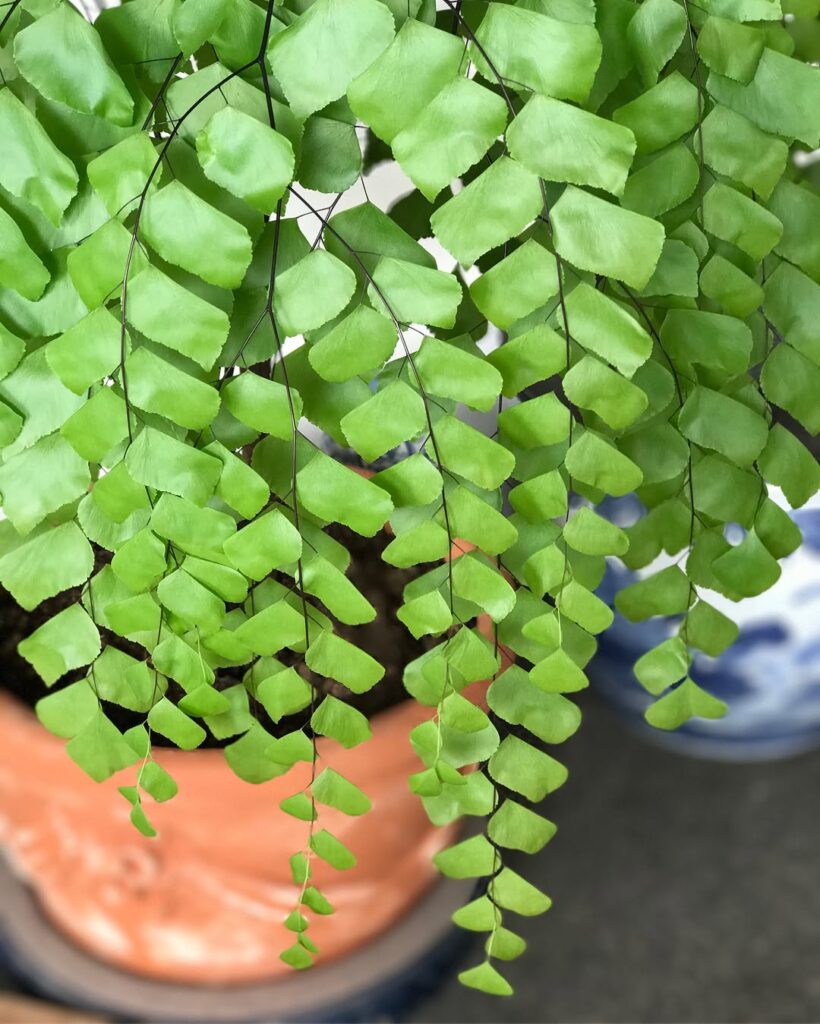
This impressive fern has wide, irregularly shaped leaflets and grows much larger than most species. It’s stunning as an ornamental feature in tropical gardens.
Adiantum microphyllum (Small-Leaved Maidenhair Fern)
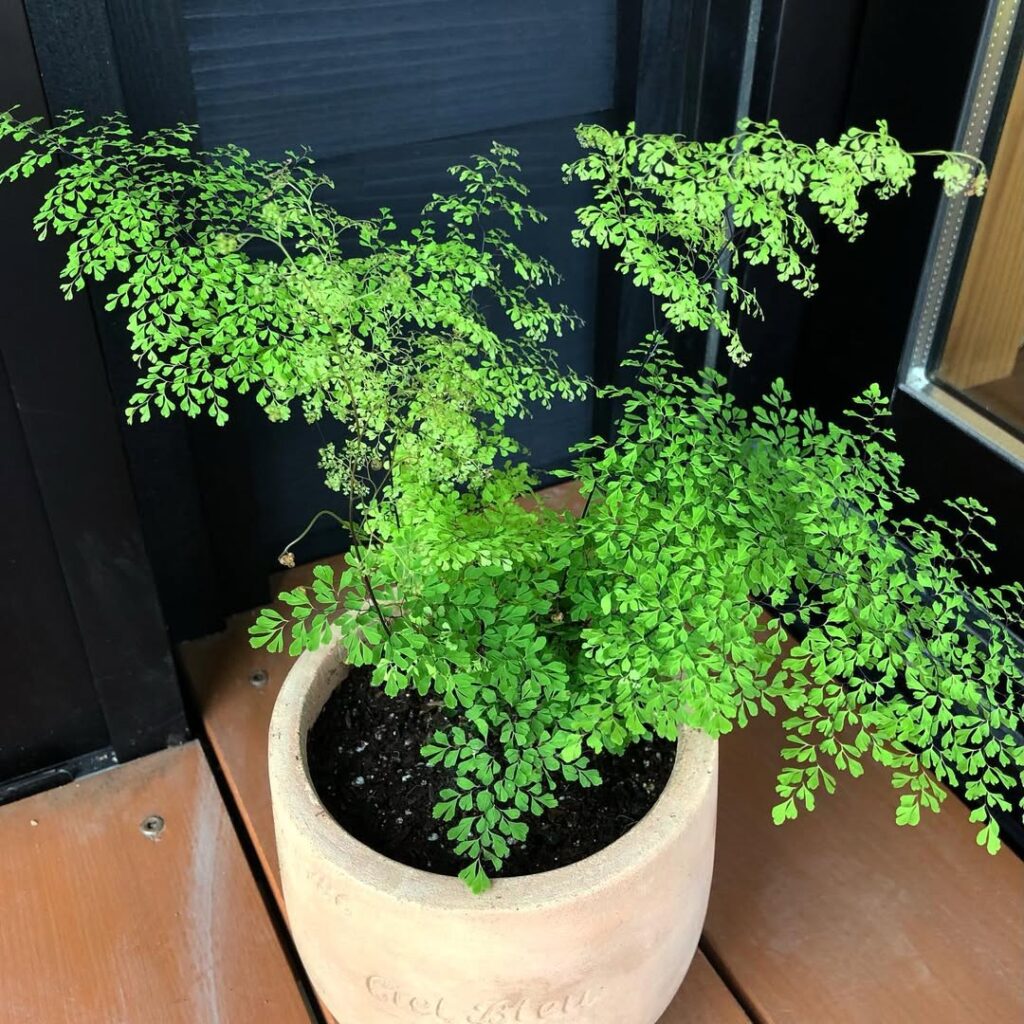
As the name suggests, this species has tiny, delicate leaves. Its fine foliage gives it a soft and airy texture that looks beautiful in shaded corners.
Adiantum venustum (Himalayan Maidenhair Fern)
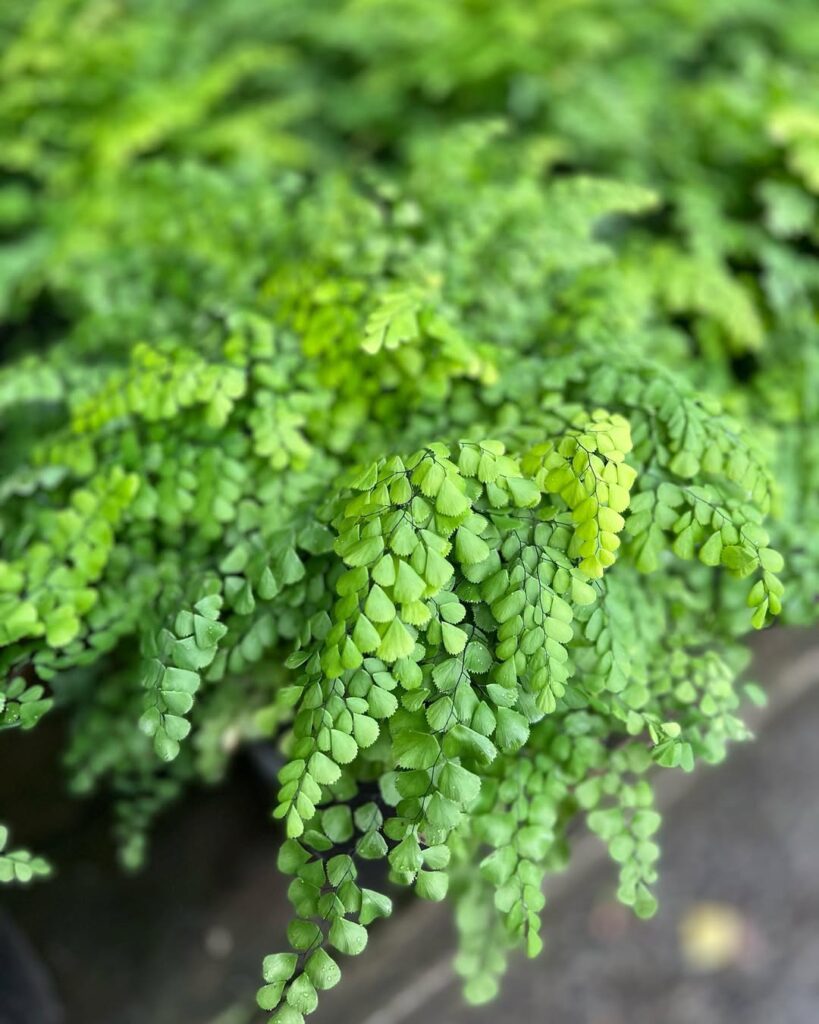
This cold-hardy variety can tolerate lower temperatures than most maidenhair ferns. It has bright green foliage that turns bronze in cooler weather.
Adiantum fulvum (Golden Maidenhair Fern)
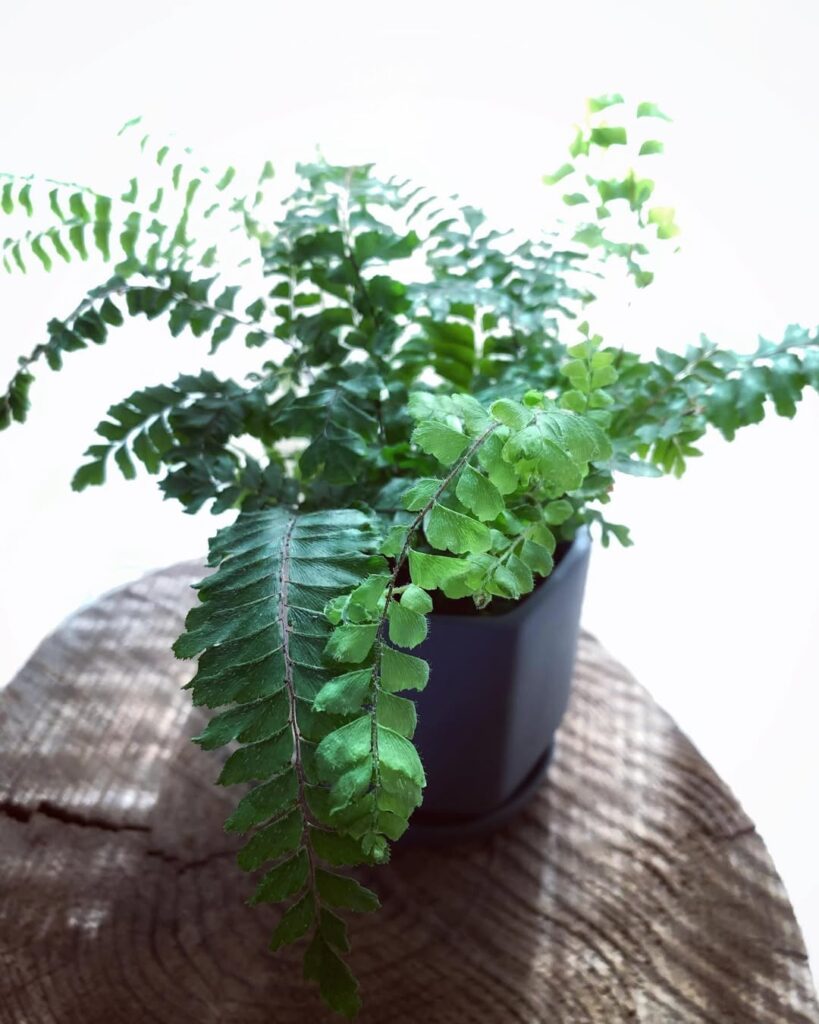
Native to New Zealand, this fern has golden-hued fronds when young. It’s more tolerant of drier conditions compared to other maidenhair ferns.
Adiantum concinnum (Elegant Maidenhair Fern)
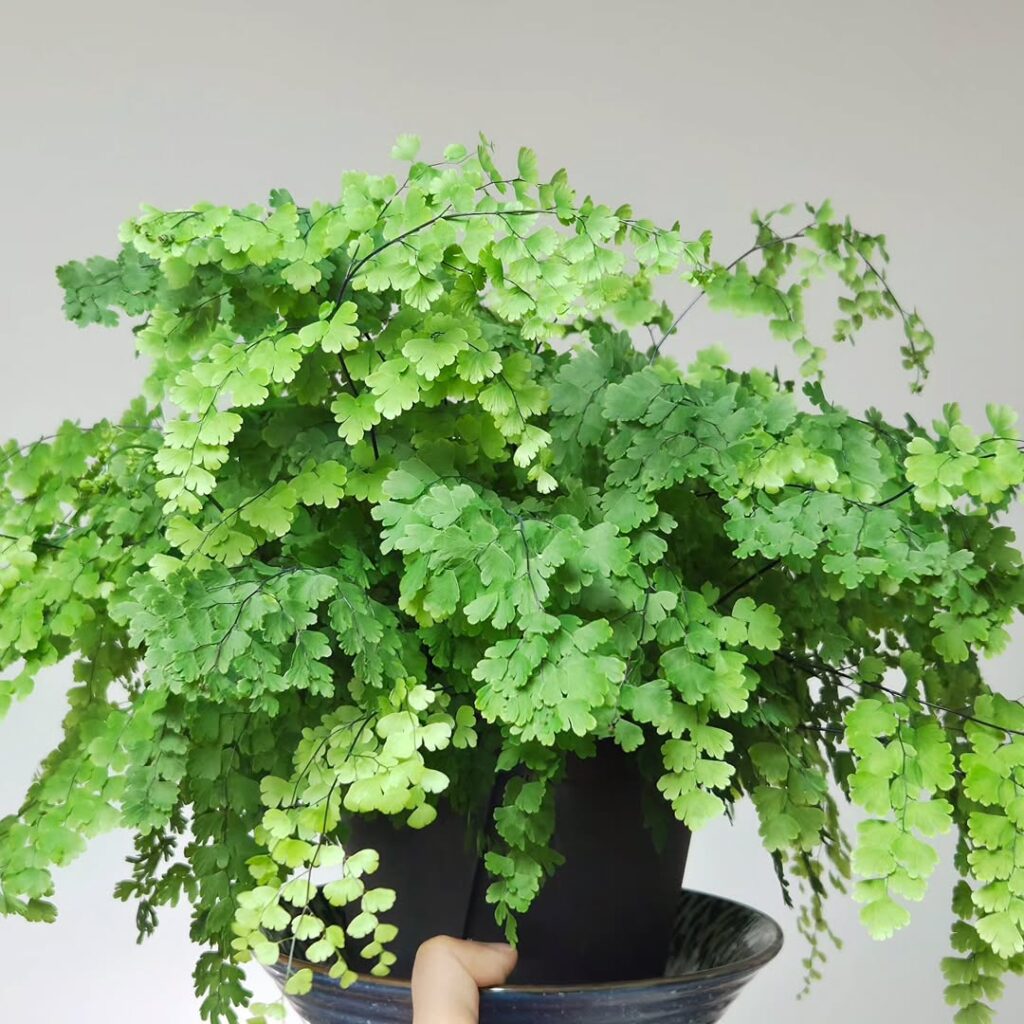
True to its name, this fern features graceful, arching fronds with finely divided leaves. It loves consistent moisture and indirect light.
Adiantum lunulatum (Crescent Maidenhair Fern)
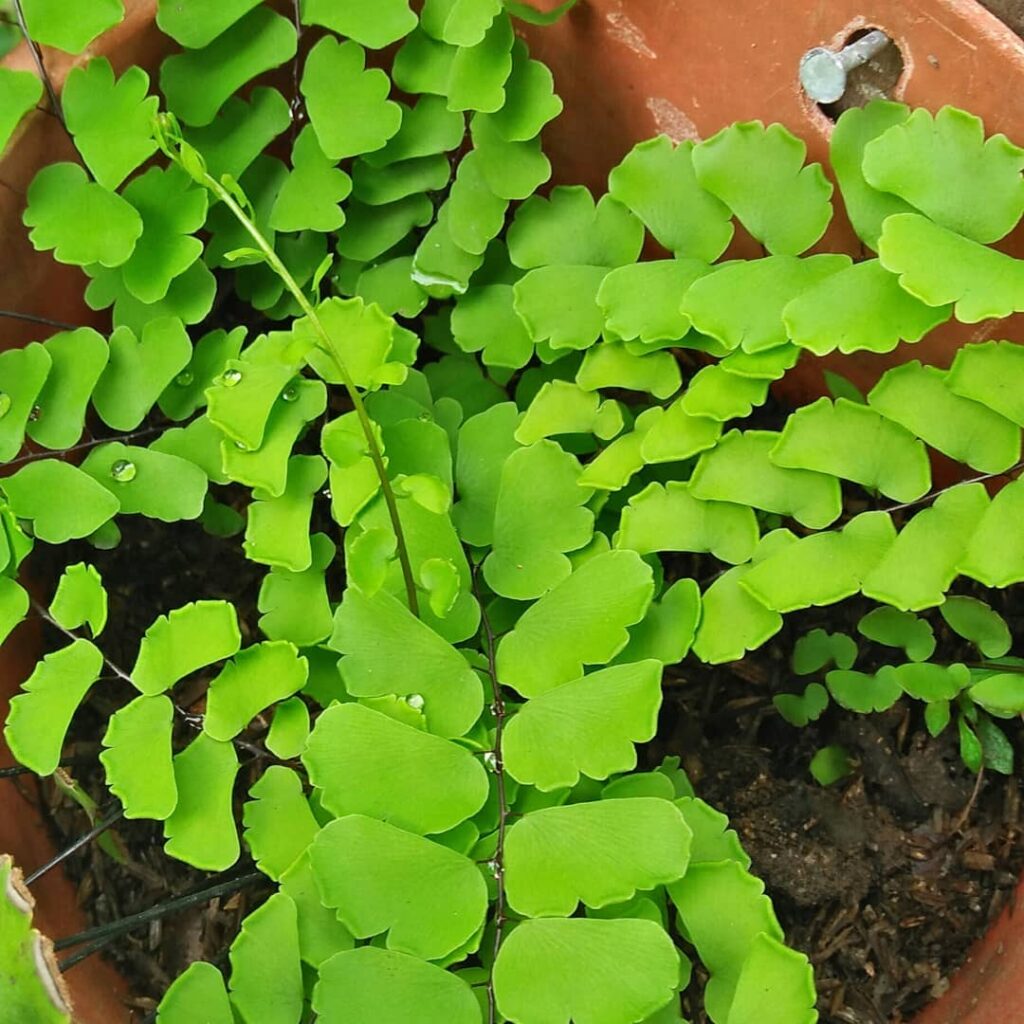
Its leaflets are shaped like small crescents, creating a distinctive look among maidenhair ferns. It prefers warm, humid conditions for optimal growth.
Adiantum caudatum (Trailing Maidenhair Fern)
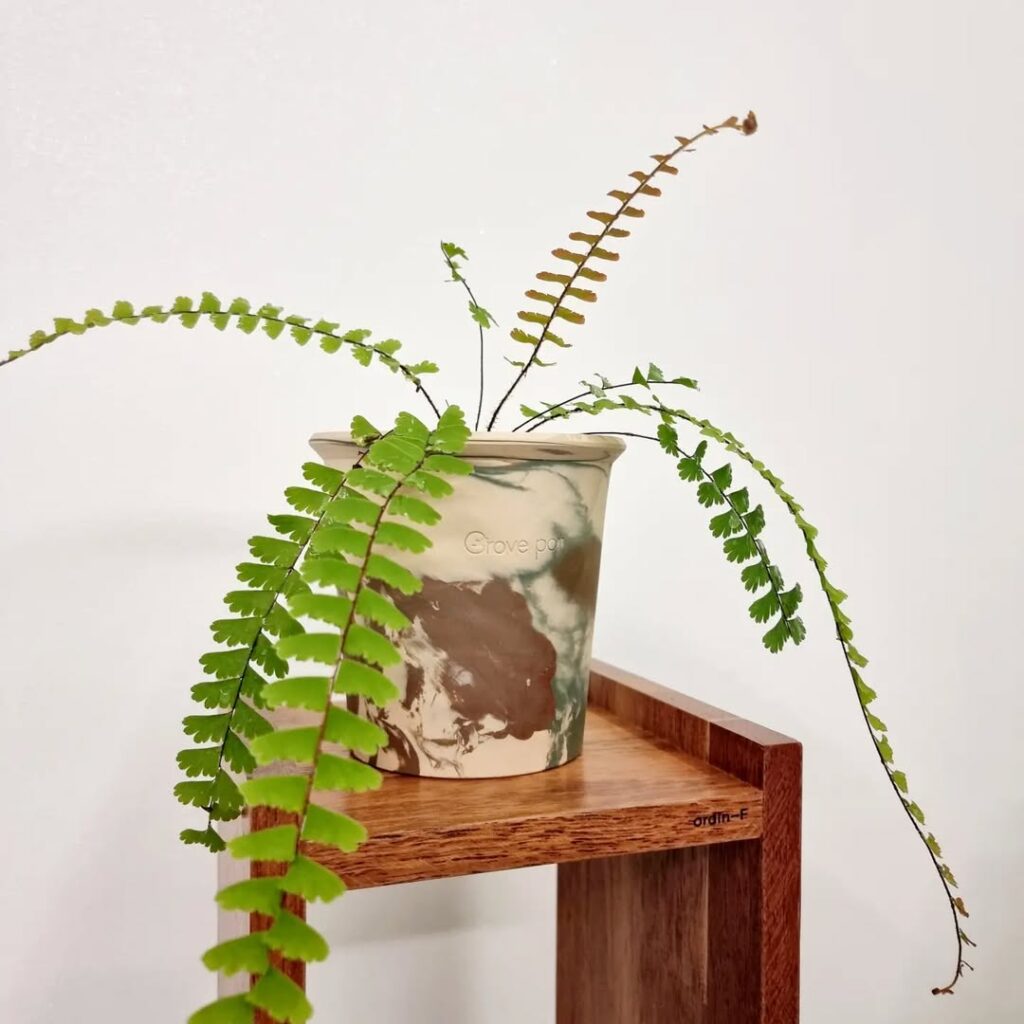
A fast-growing species with cascading fronds that drape beautifully over hanging pots. It’s great for vertical gardening and shaded balconies.
Adiantum macrophyllum (Large-Leaved Maidenhair Fern)
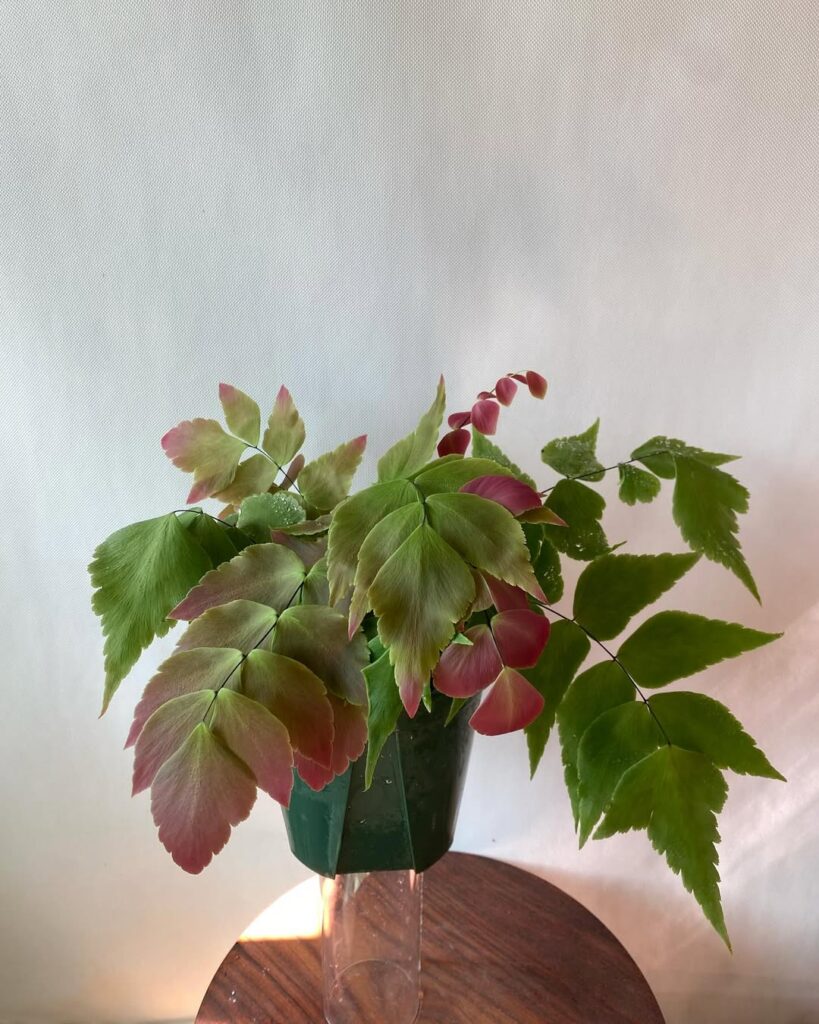
Unlike most maidenhair ferns, this variety has broad leaflets and a slightly bolder texture. It stands out beautifully in moist, shaded gardens.
Adiantum latifolium (Broad Maidenhair Fern)
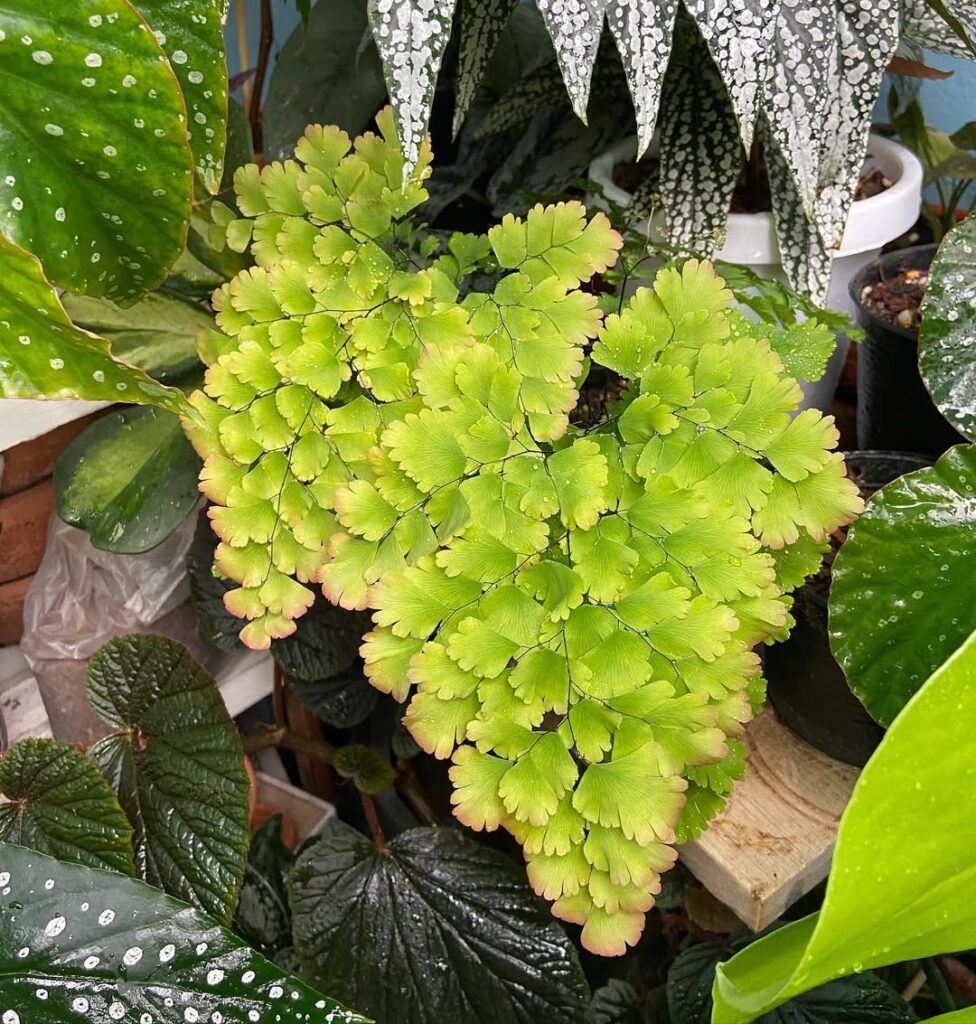
Similar to A. macrophyllum, this fern has larger, fan-shaped leaflets, making it a striking addition to tropical plant collections.
Adiantum edgeworthii (Edgeworth’s Maidenhair Fern)
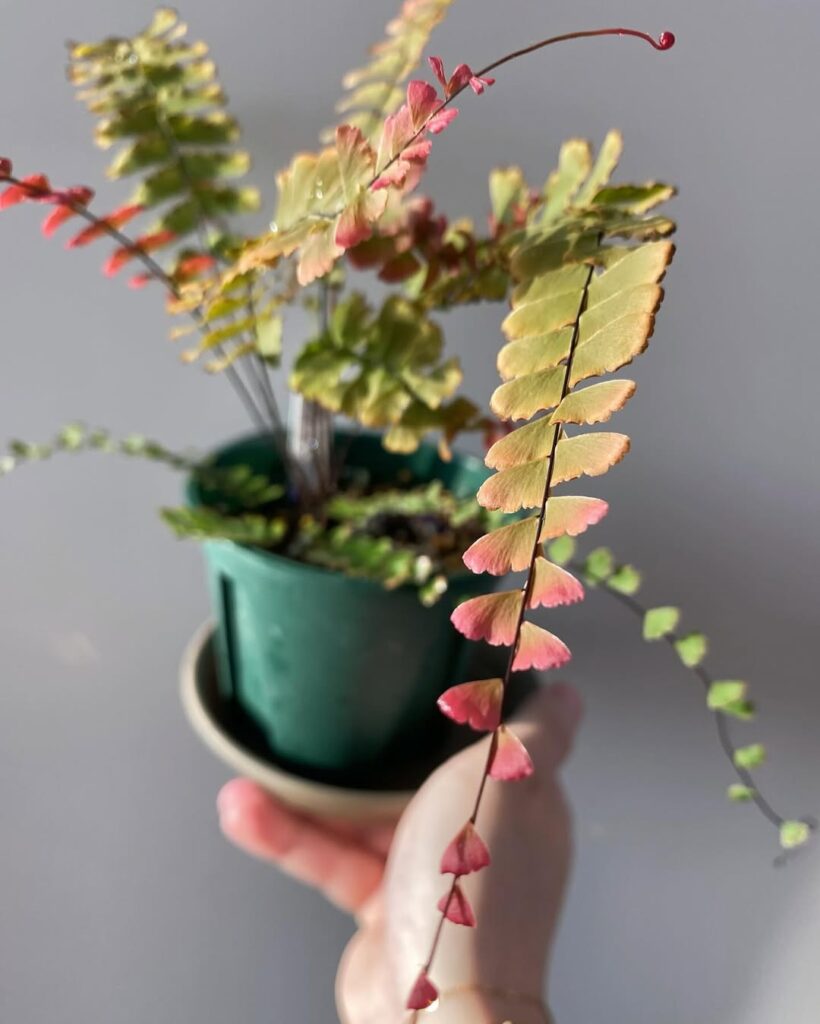
A cold-tolerant species that thrives in mountainous regions. Its fronds turn bronze in cooler temperatures, making it a stunning seasonal fern.
Adiantum cunninghamii (Cunningham’s Maidenhair Fern)

Native to Australia and New Zealand, this fern has dense, overlapping fronds that create a lush, layered look.
Adiantum formosum (New Zealand Maidenhair Fern)
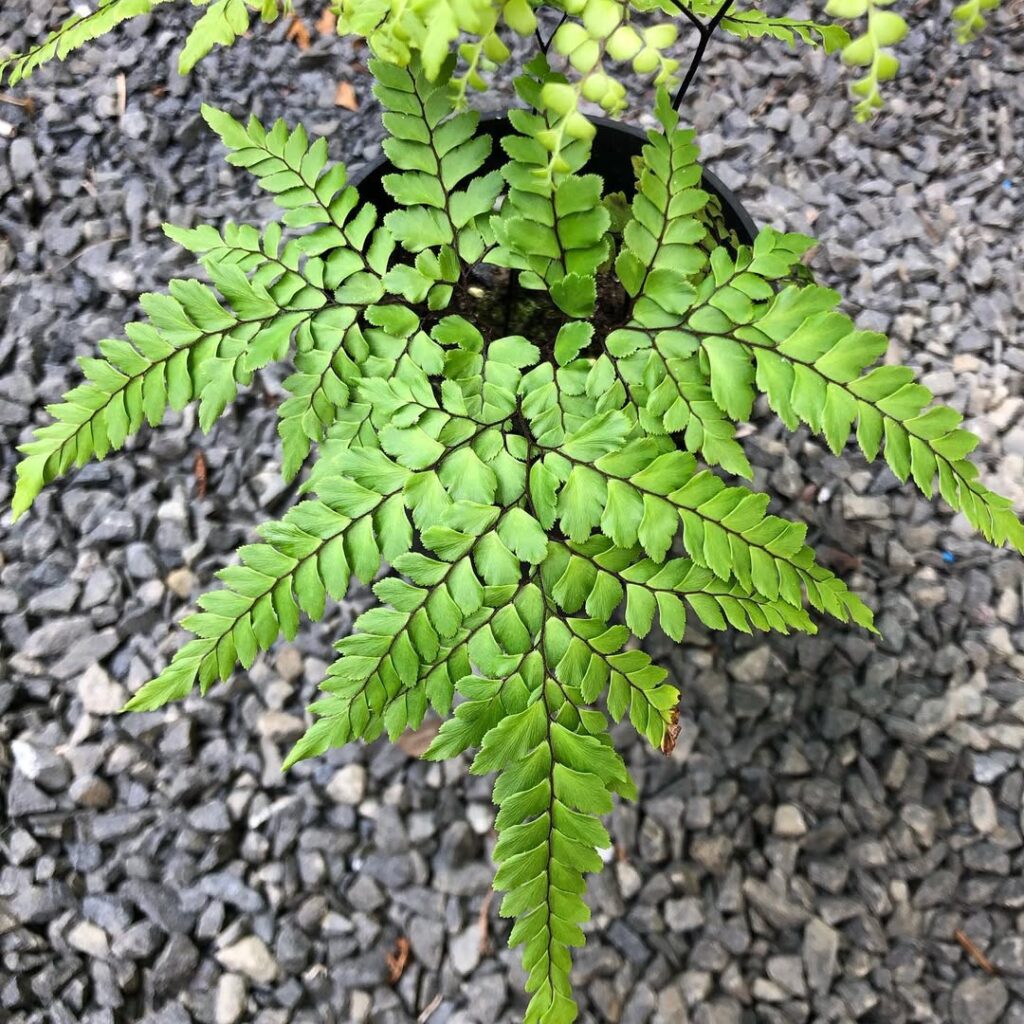
An elegant, slow-growing fern with finely divided leaves. It’s well-suited to terrariums and high-humidity environments.
Adiantum shastense (Shasta Maidenhair Fern)
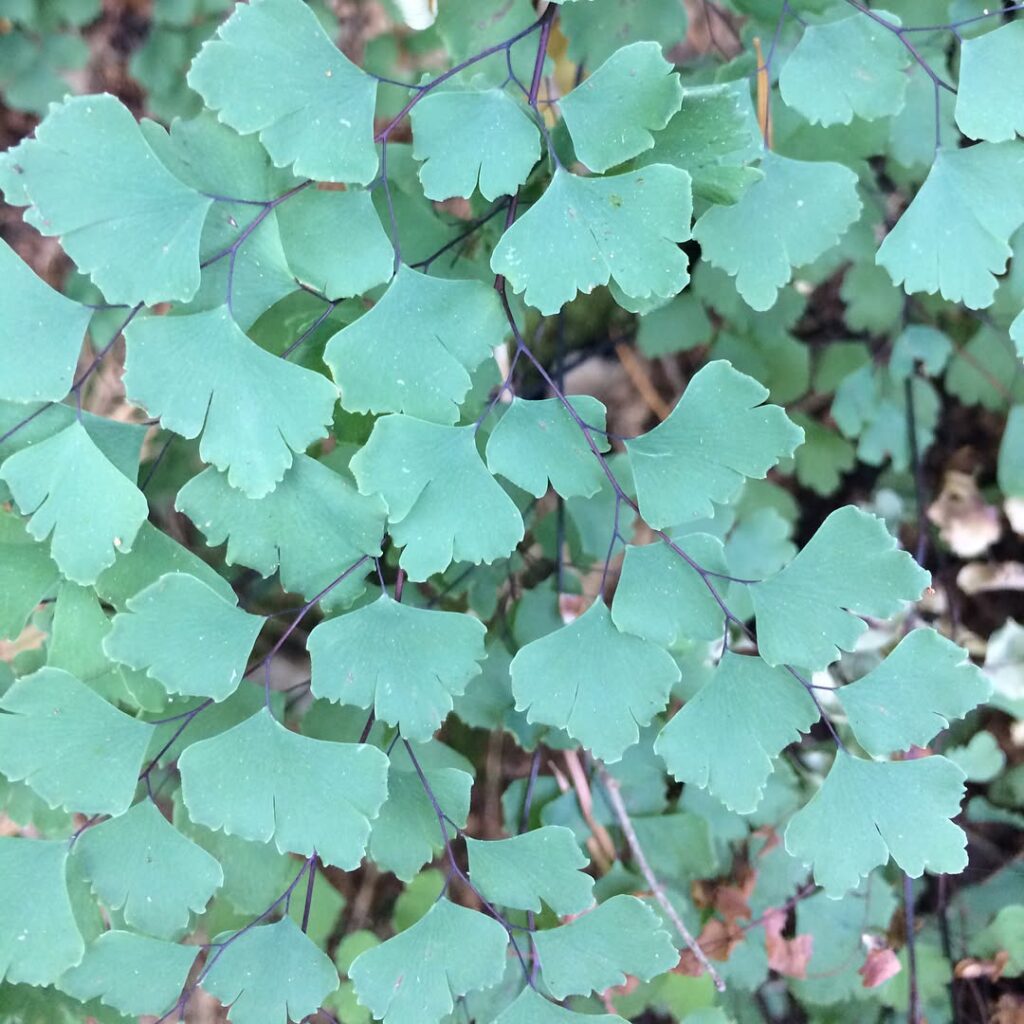
A recently identified species, Adiantum shastense is native to Northern California and thrives in moist, shaded environments. It has delicate, finely divided fronds and is sometimes found growing near limestone-rich areas.
Adiantum capillus-junonis (Junon’s Maidenhair Fern)
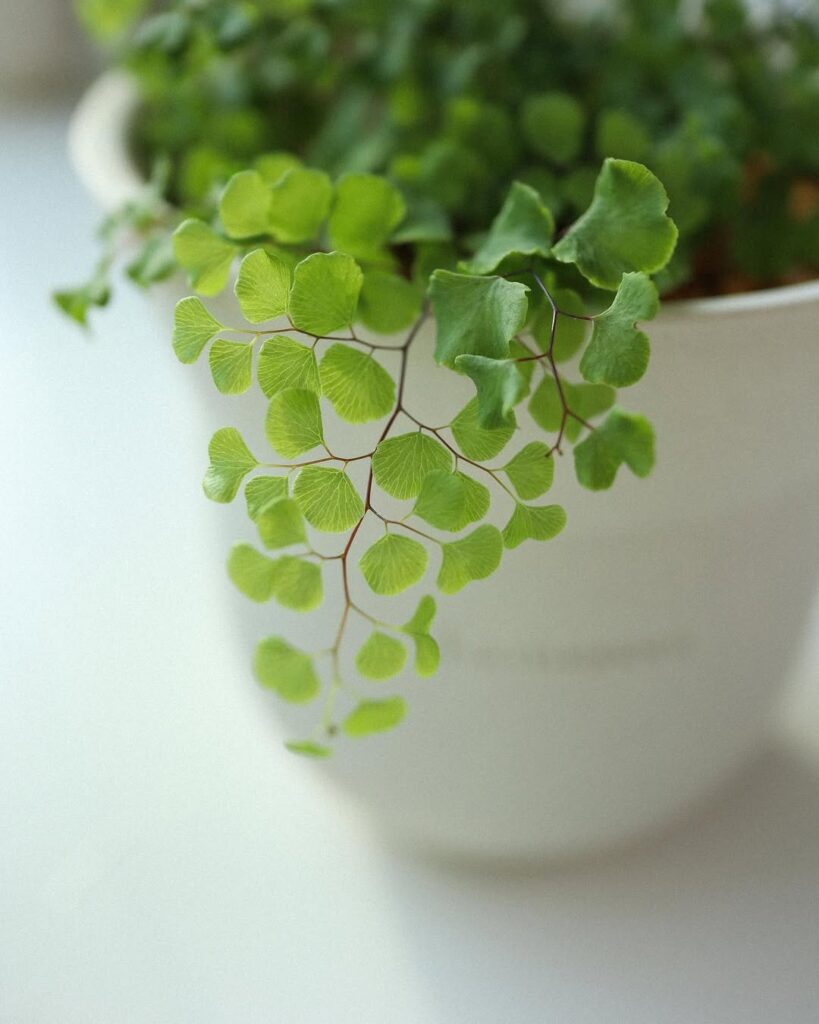
Similar to the classic Southern Maidenhair, this species has a slightly more compact growth and thrives in humid shade.
Adiantum aethiopicum (Common Maidenhair Fern)
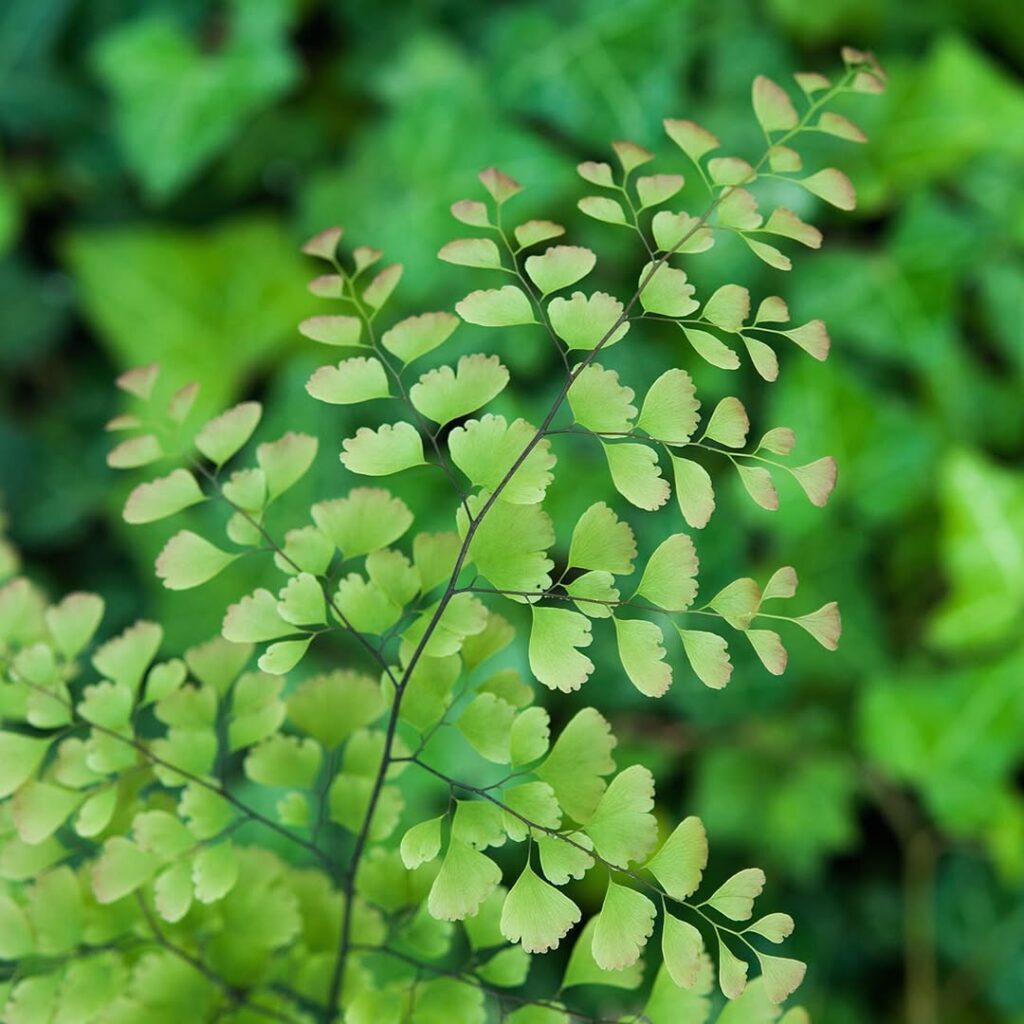
This popular species is known for its delicate, fan-shaped fronds and graceful, arching growth. It thrives in humid environments and is often used in indoor gardens or shaded outdoor spaces.
Adiantum cuneatum (Wedge Maidenhair Fern)
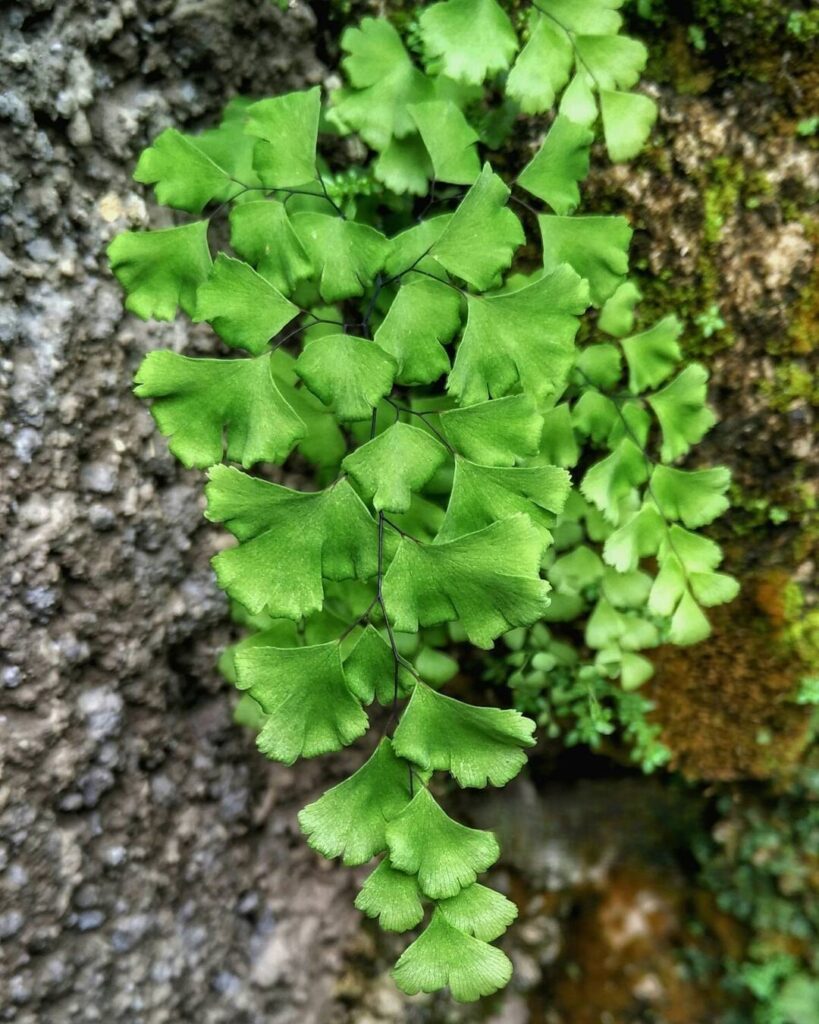
This classic variety features delicate, fan-shaped fronds with a soft, airy texture. It thrives in high humidity and indirect light, making it a favorite for indoor gardens and terrariums.
Adiantum scabrum (Rough Maidenhair Fern)
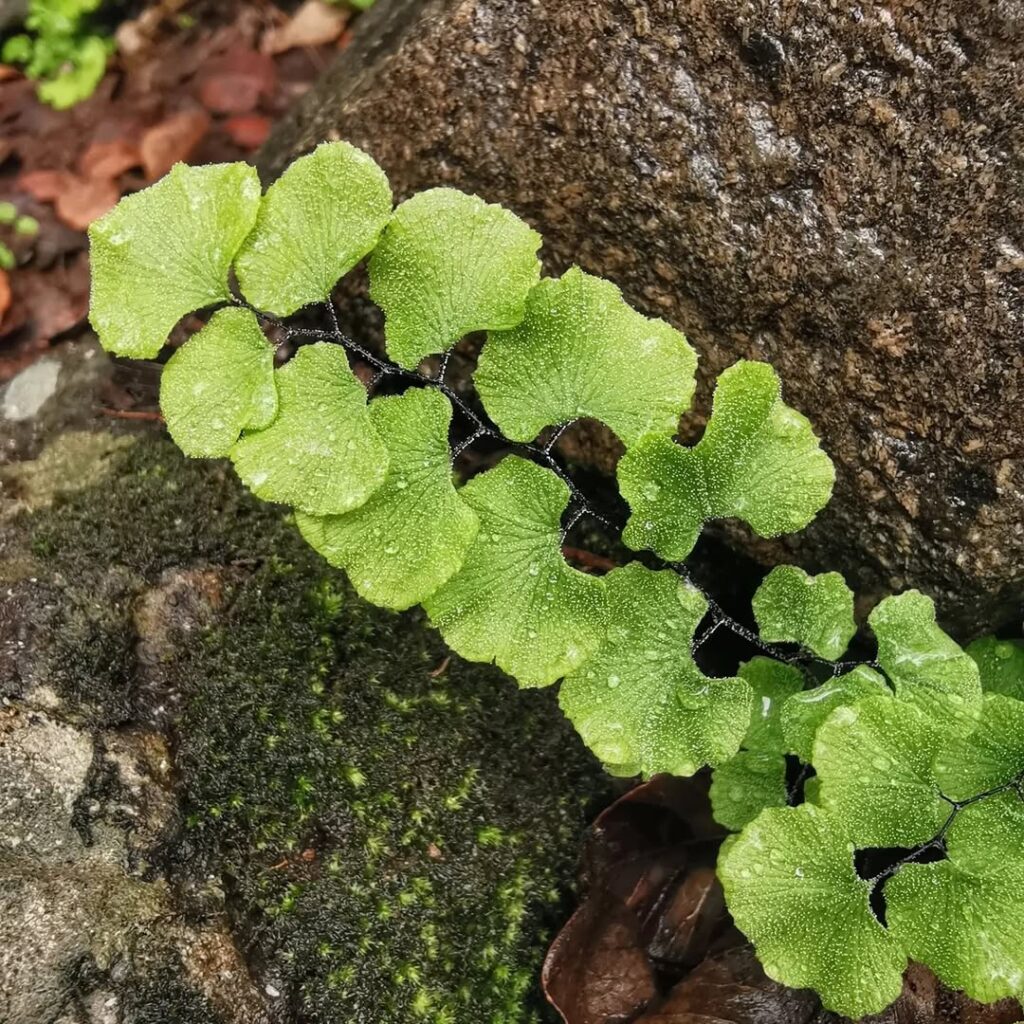
A unique variety with slightly rugged frond edges, giving it a textured appearance among delicate maidenhair species.
Adiantum aleuticum (Western Maidenhair Fern)
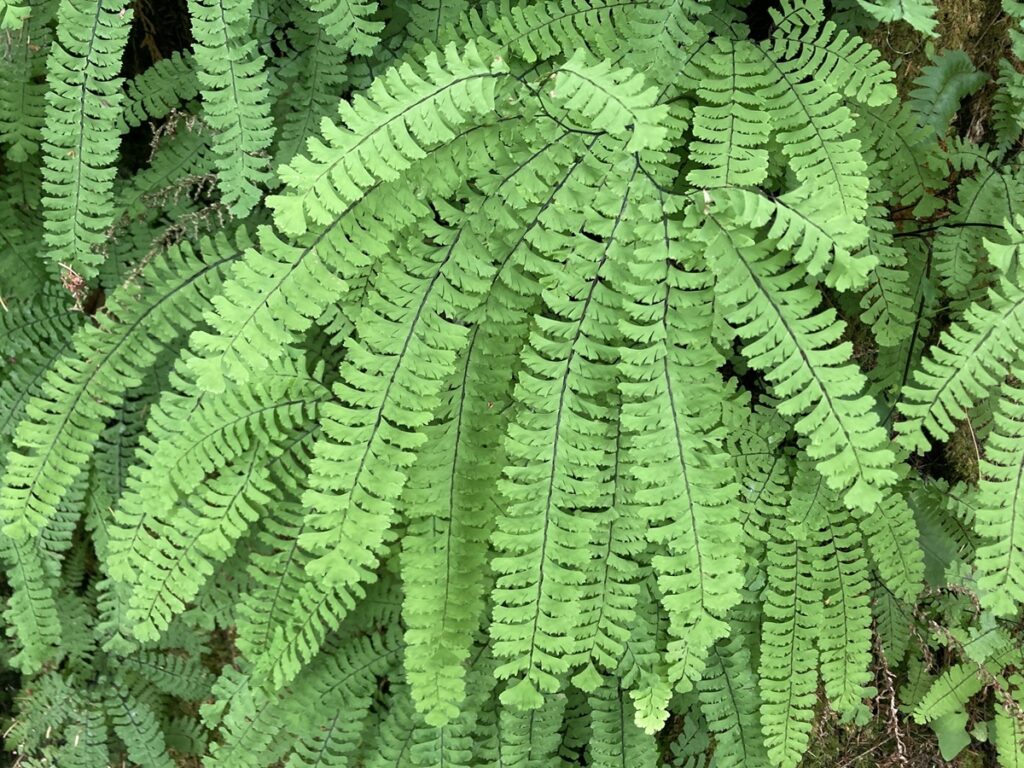
This elegant, deciduous fern features bright green, fan-shaped fronds that open like the fingers of a hand atop shiny, purple-black wiry stems. It thrives in moist, shaded environments but can also grow in high-altitude, rocky areas, adapting to different light conditions. When grown in shade, its fronds spread horizontally, while in sunnier spots, they stand more upright.
Adiantum aleuticum ‘Subpumilum’ (Dwarf Western Maidenhair Fern)
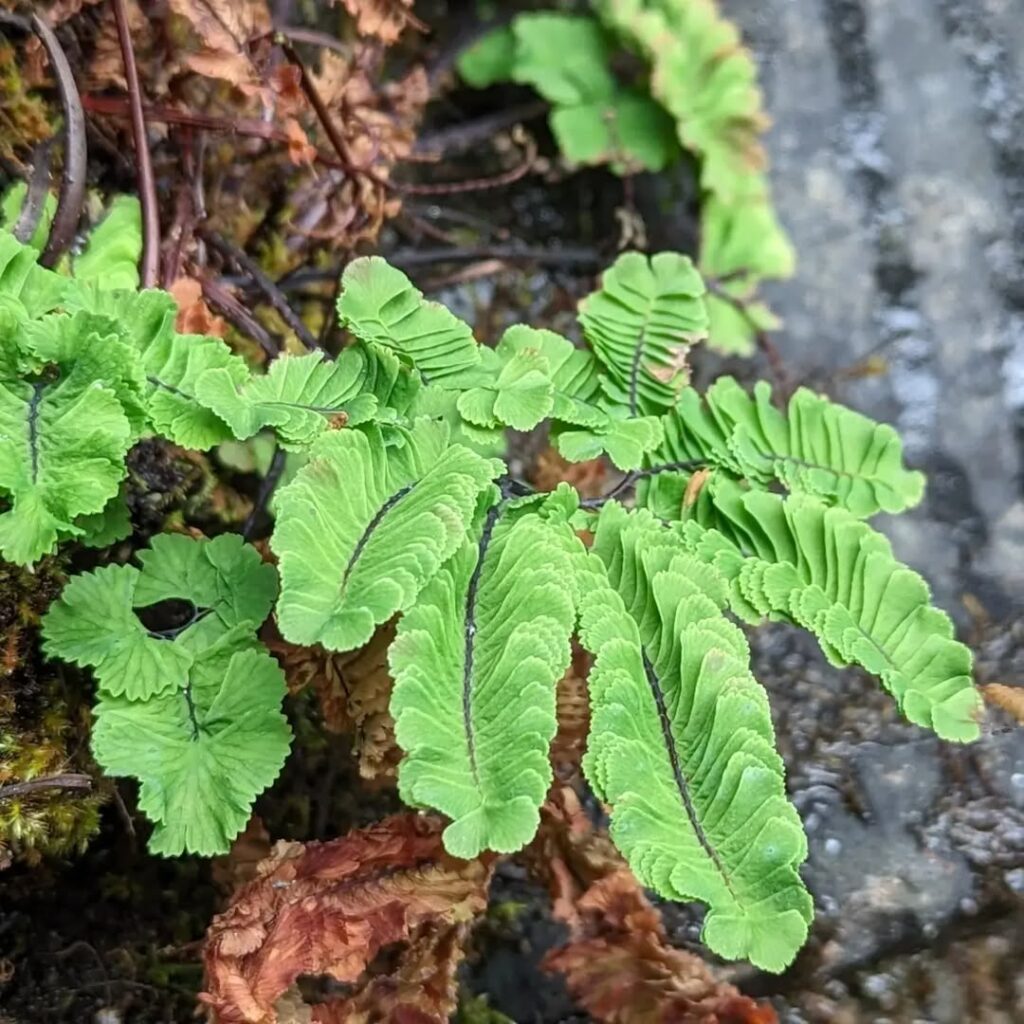
This compact cultivar of Adiantum aleuticum grows only 6–9 inches tall, making it perfect for small gardens and container displays. It features shiny black stems and lime-green fronds, thriving in moist, well-drained soil with light shade.
Adiantum aleuticum ‘Imbricatum’ (Dwarf Western Maidenhair Fern)

This compact cultivar of Adiantum aleuticum grows 6–8 inches tall and spreads 12–18 inches wide, making it ideal for small gardens and containers. It features black stems and closely spaced, fan-shaped fronds that create a dense, layered look. Thriving in bright shade with consistent moisture, it’s a low-maintenance yet elegant addition to shaded landscapes.
Adiantum aleuticum ‘Miss Sharples’ (Aleutian Maidenhair Fern)
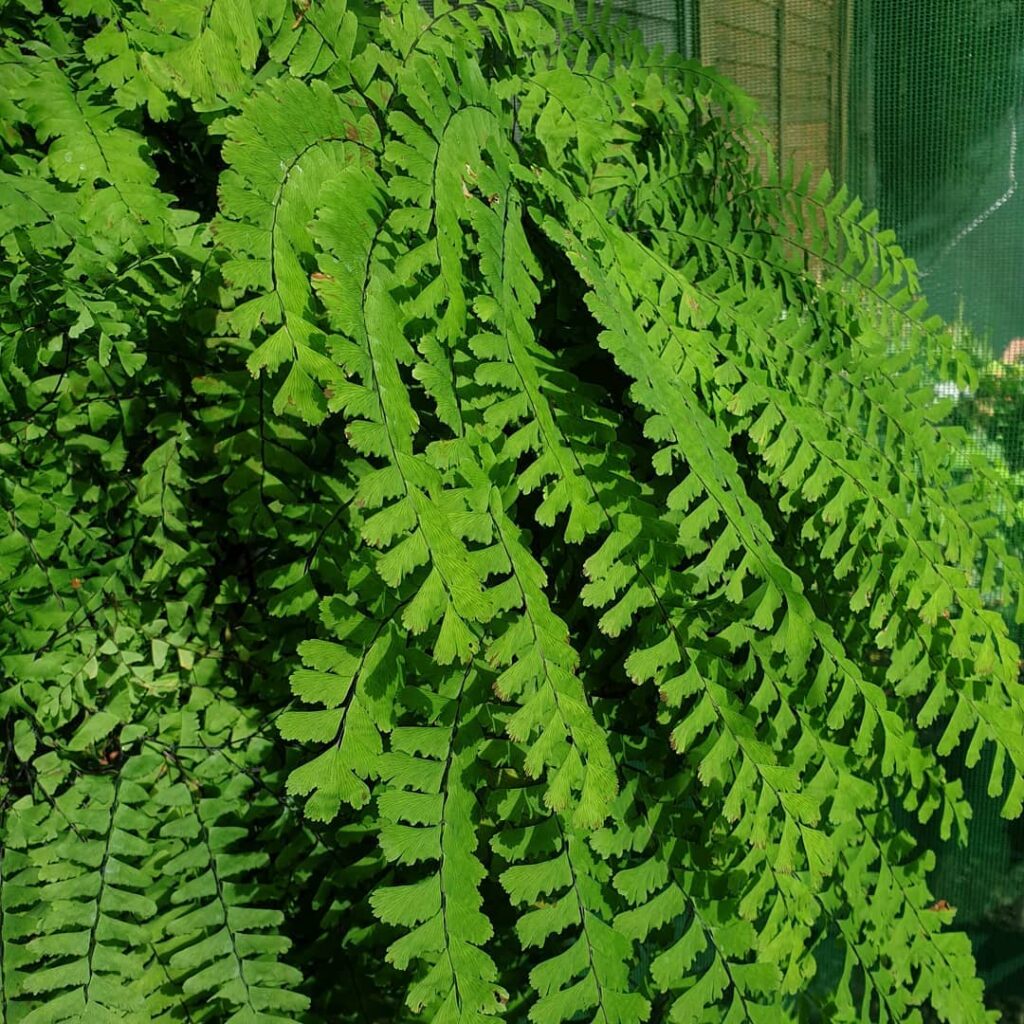
This compact, deciduous fern features delicate, finger-like fronds that emerge in spring with bronze and yellow hues before maturing to a soft green. Its dark, wiry stems contrast beautifully with its foliage, creating an elegant, airy texture. Thriving in moist, shaded environments, it prefers slightly acidic to neutral soil and can tolerate cold temperatures down to Zone 6b.
Adiantum anceps (Double Edge Maidenhair Fern)
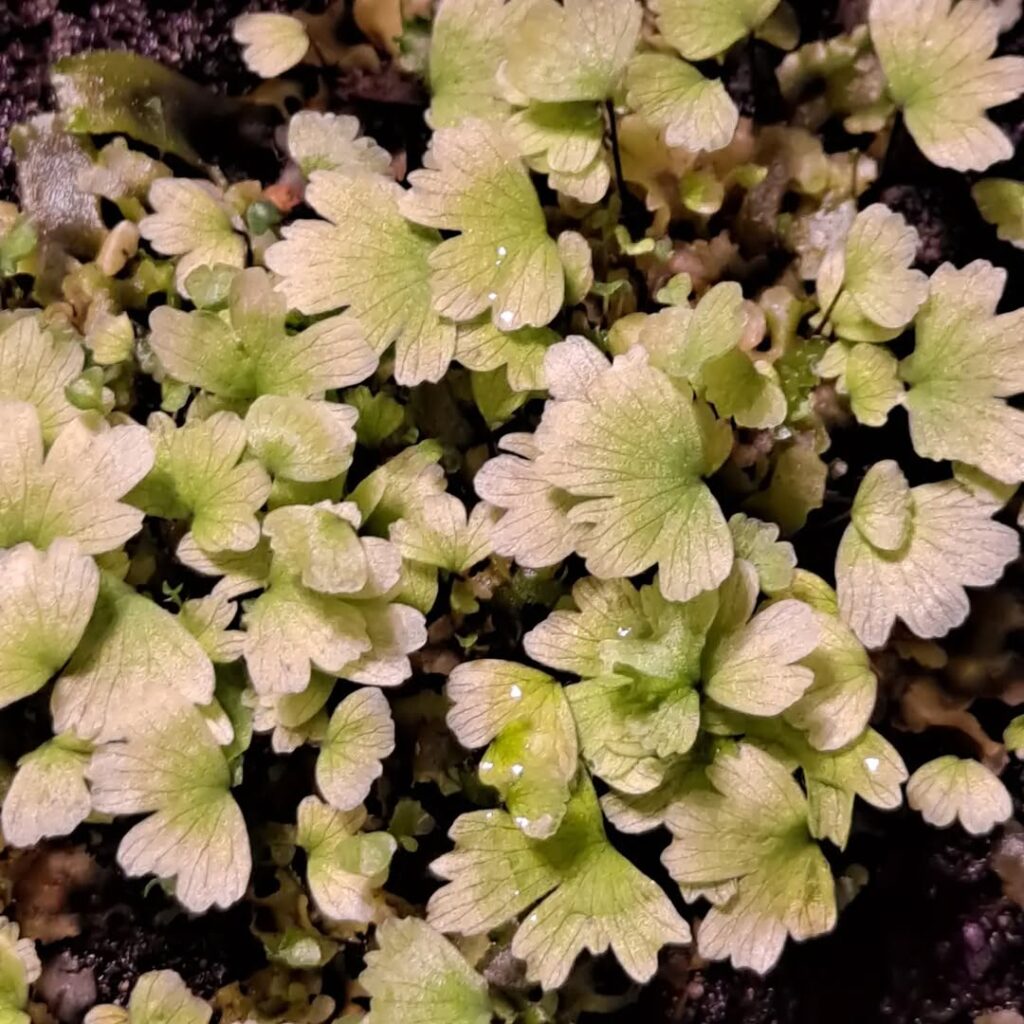
This ornamental fern features green, rhombus-shaped leaflets with distinct black edges, giving it a striking contrast. It thrives in humid, shaded environments and can be grown as a houseplant or in subtropical and Mediterranean gardens. Preferring rich, well-draining soil, it requires consistent moisture but should never sit in soggy conditions. Its delicate, airy fronds make it a beautiful addition to indoor spaces, provided it gets indirect light and high humidity.
Adiantum atroviride (Dark Green Maidenhair Fern)

This Australian-native maidenhair fern features shiny black stems and delicate, fan-shaped fronds that can grow up to 75 cm (30 in) long. It thrives in humid, shaded environments, often found in vine forests and sclerophyll woodlands. The fronds are loosely clustered, with deeply lobed leaf margins and round to kidney-shaped sori positioned at the base of the lobes. This species was once considered a variety of Adiantum aethiopicum but was formally recognized as a distinct species in 1998.
Adiantum bellum (Bermuda Maidenhair Fern)
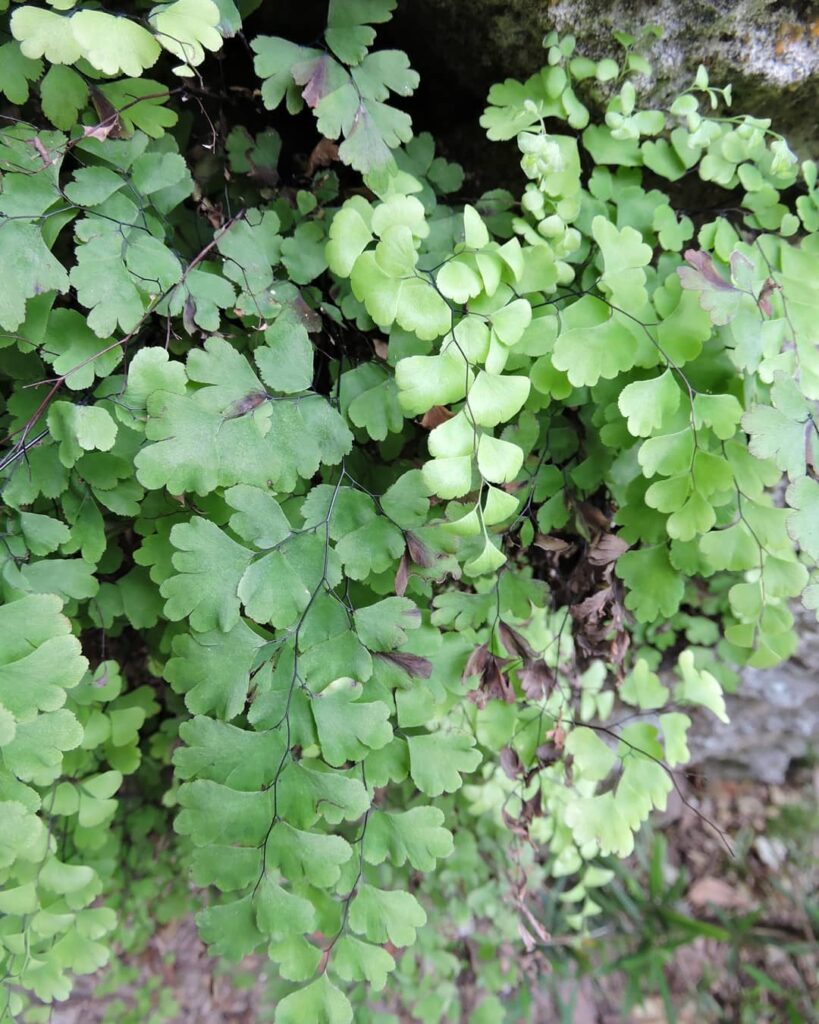
This endemic fern is native to Bermuda, where it thrives in rock crevices, cliffs, and shaded hillsides. It features light to medium green, fan-shaped fronds with black stems, growing up to 30 cm (12 in) long. Preferring moist, well-drained soil, it flourishes in humid environments but is not hardy in colder climates. While sometimes cultivated indoors, it requires consistent humidity and low to medium light to thrive.
Adiantum bessoniae (Besson’s Maidenhair Fern)
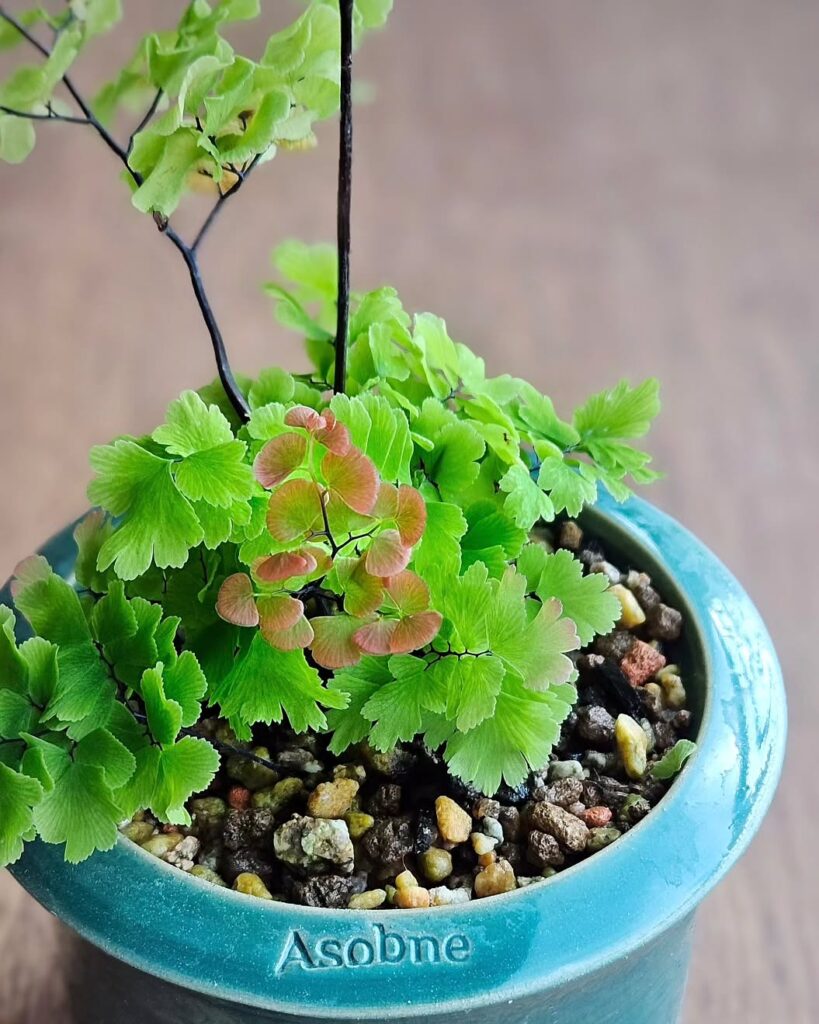
This rare species is native to Trinidad, thriving in humid, shaded environments with moist, well-drained soil. It features delicate, finely divided fronds and dark wiry stems, characteristic of the Adiantum genus.
Adiantum chilense (Chilean Maidenhair Fern)
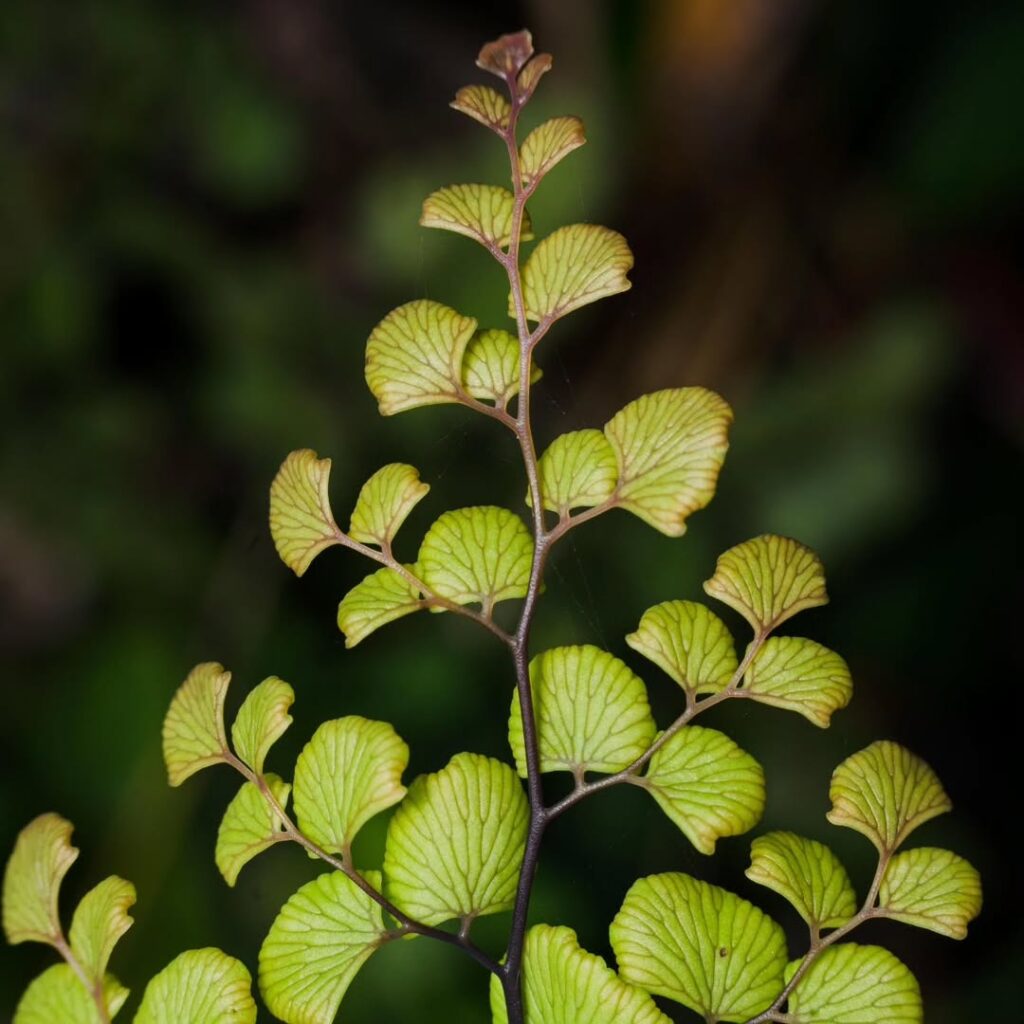
This South American native thrives in moist soils near streams and wet meadows, making it well-suited for humid environments. It features long, lacy, evergreen fronds that form a dense, tufted growth, creating a soft, airy texture. Often used as an ornamental plant, it also has applications in erosion control and traditional medicine.
Adiantum diaphanum (Filmy Maidenhair Fern)
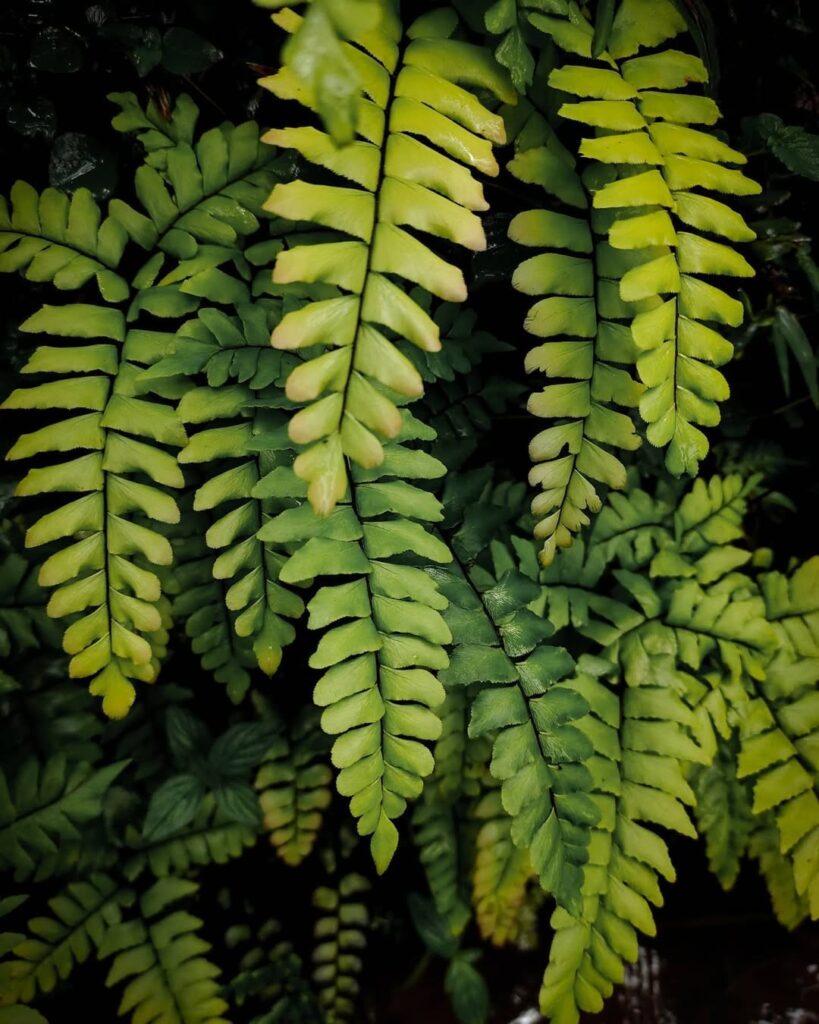
This delicate fern is native to East Asia and Australasia, including southern Japan, China, Taiwan, and New Zealand. It grows up to 20 cm tall, featuring very dark green fronds covered with fine bristles. Often found in moist, shaded environments, it thrives in coastal forests, rocky stream sides, and clay banks. Its tuberous rootlets distinguish it from similar species like Adiantum hispidulum.
Adiantum erylliae (Erylliae Maidenhair Fern)
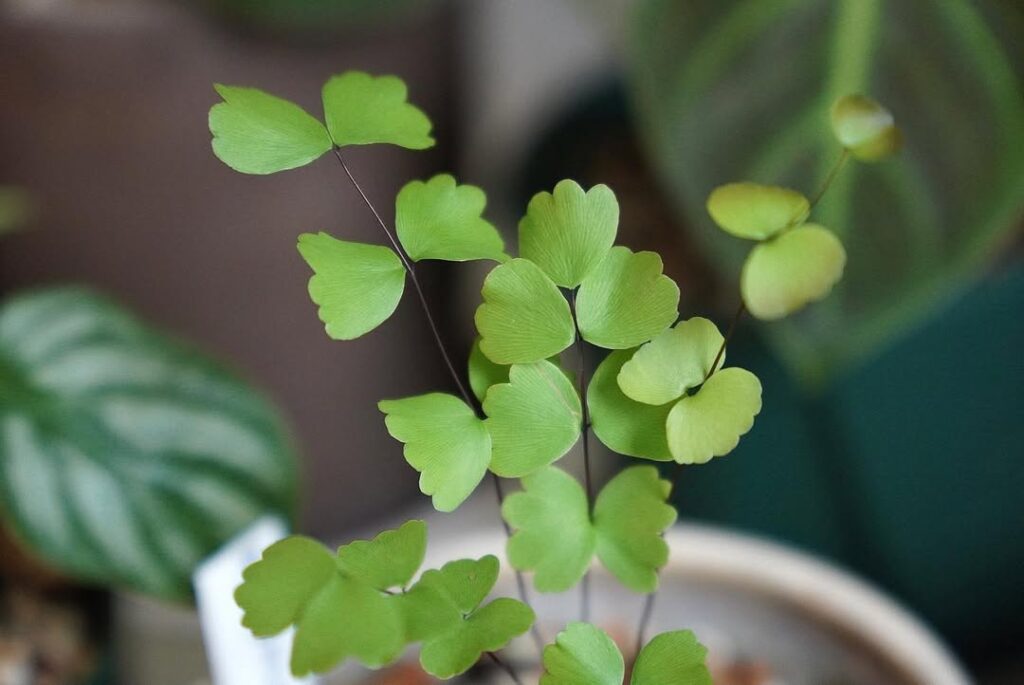
This tropical fern is native to Indo-China, thriving in moist, shaded environments like forests and woodlands. It features delicate, fan-shaped fronds and is often cultivated as an ornamental plant. While primarily grown for its elegant foliage, it has also been used in traditional medicine. Preferring high humidity and well-drained soil, it can be propagated by spores or division.
Adiantum excisum (Chilean Maidenhair Fern)
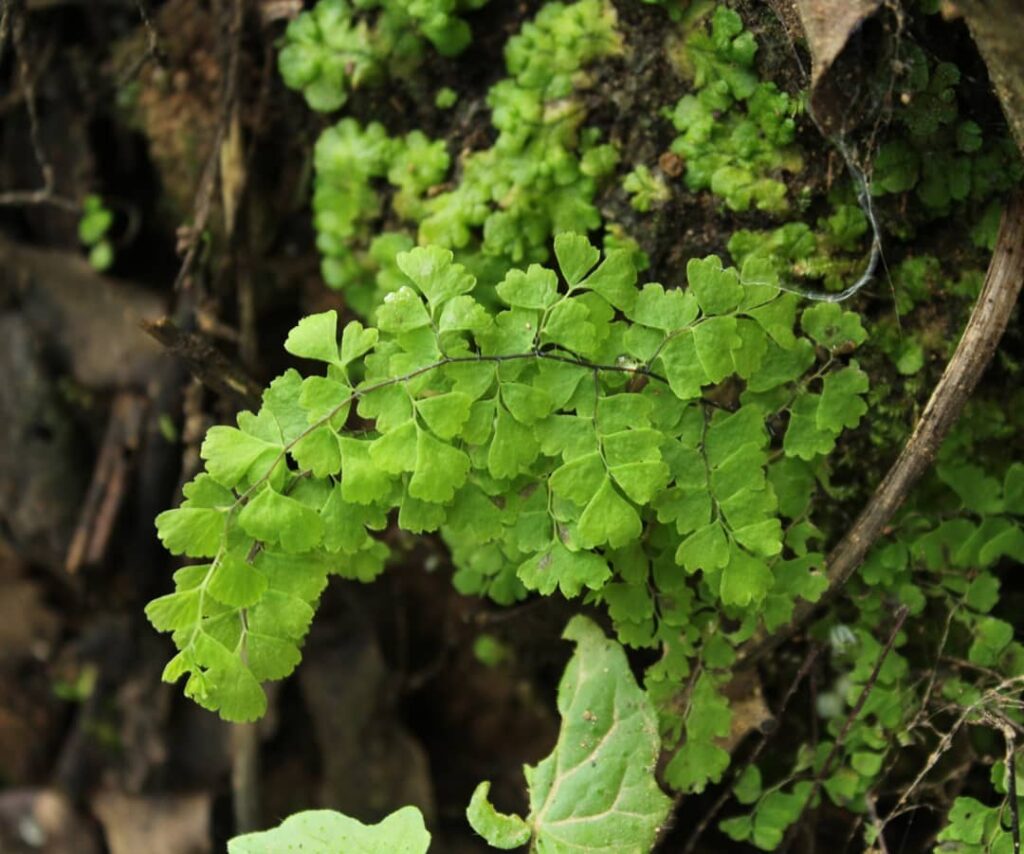
This elegant fern is native to Chile, thriving in moist, shaded environments with delicate, fan-shaped fronds. It features shiny black stems and soft green foliage, making it a beautiful addition to humid gardens or indoor spaces. Preferring consistent moisture, it grows best in well-draining soil with indirect light.
Adiantum flabellulatum (Fan-Leaved Maidenhair Fern)
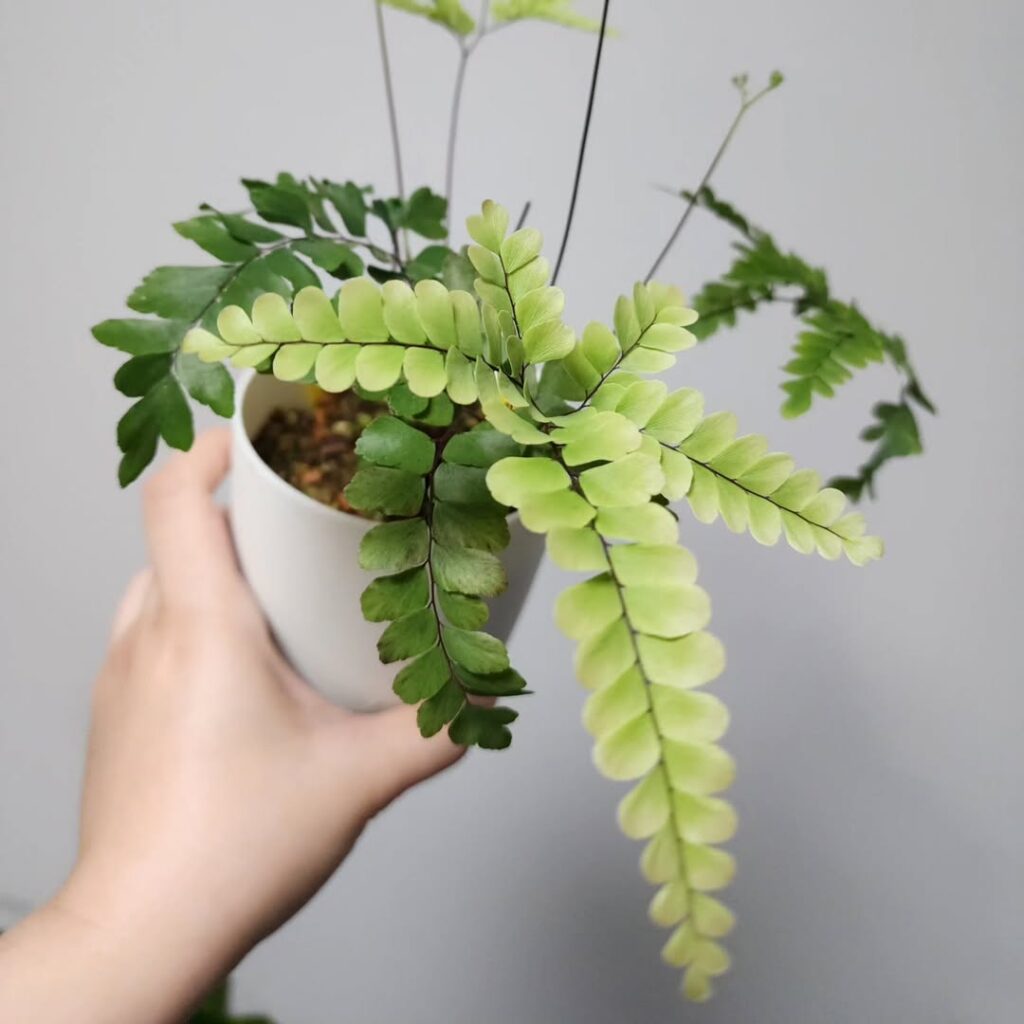
This tropical and subtropical fern is native to Asia, including regions like China, Japan, and Southeast Asia. It grows up to 45 cm tall, featuring pedately branched fronds with flabellate (fan-shaped) leaflets. The black-purple glossy stipes and deeply lobed pinnules give it a delicate yet structured appearance. Thriving in humid, shaded environments, it prefers moist, well-drained soil and is often found in open forests or rocky stream banks.
Adiantum fragrans (Fragrans Maidenhair Fern)
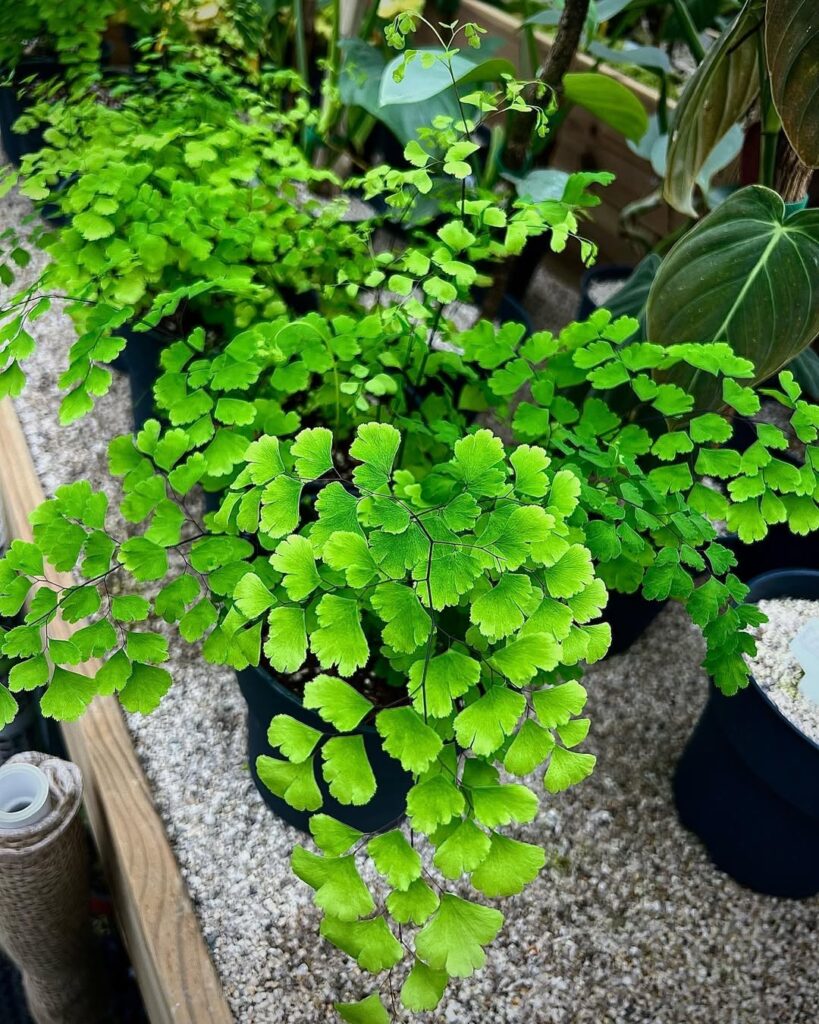
This compact, evergreen fern is a cultivar of Adiantum raddianum, known for its delicate, lacy fronds and shiny black stems. It thrives in humid, shaded environments, making it a popular choice for indoor gardens and terrariums. With creeping rhizomes, it produces clusters of spreading pinnate fronds, creating a soft, airy texture. Preferring consistent moisture, it requires well-draining soil and bright, indirect light to flourish.
Adiantum gertrudis (Gertrudis Maidenhair Fern)
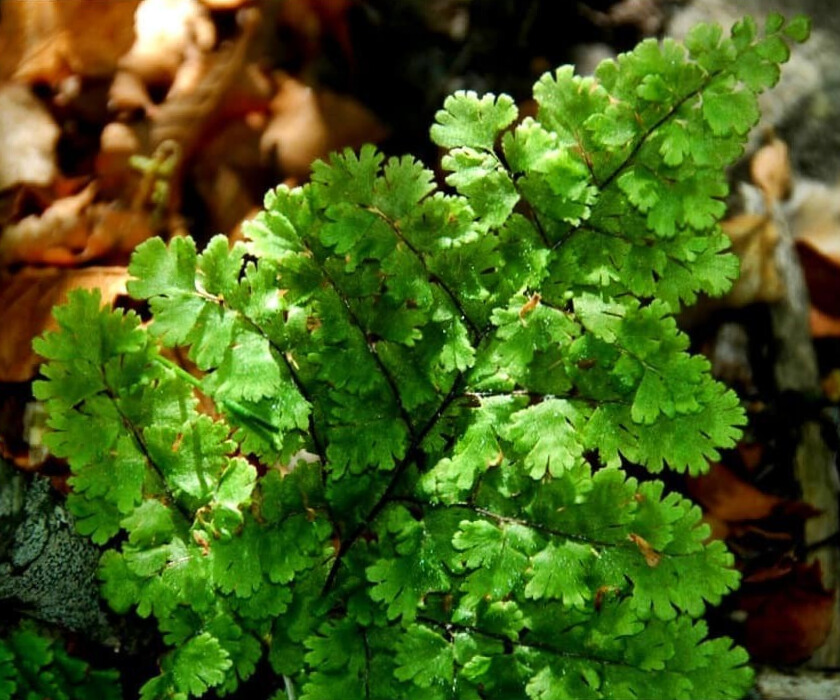
This rare species is native to central South America, with known occurrences in Chile’s La Campana National Park. It belongs to the Vittarioideae subfamily of the Pteridaceae family and is considered threatened. One of its distinguishing features is the hairs covering its fronds, which set it apart from other Adiantum species.
Adiantum incisum (Incised Maidenhair Fern)

This delicate fern is native to Africa, the Arabian Peninsula, and parts of Asia, thriving in moist, shaded environments. It features deeply lobed, dimidiate leaflets with a fine, feathery texture, supported by dark, wiry stems. Preferring high humidity and well-drained soil, it is often found in evergreen forests and along moist rock crevices.
Adiantum jordanii (California Maidenhair Fern)
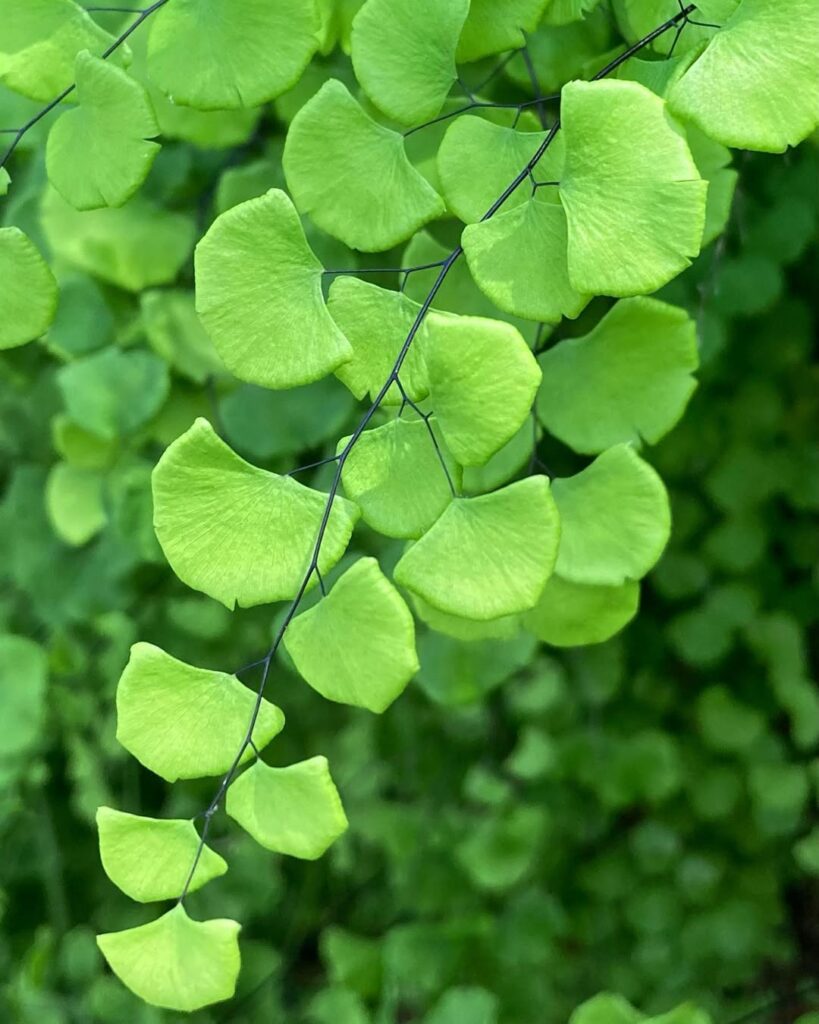
This evergreen fern, native to California and Oregon, thrives in moist, shaded environments like rocky slopes and forests. Its twice-divided, fan-shaped fronds with dark wiry stems create a graceful, arching appearance. While popular in woodland gardens, it serves as a host for Phytophthora ramorum, a pathogen linked to Sudden Oak Death, restricting its import in some areas.
Adiantum malesianum (Malesian Maidenhair Fern)
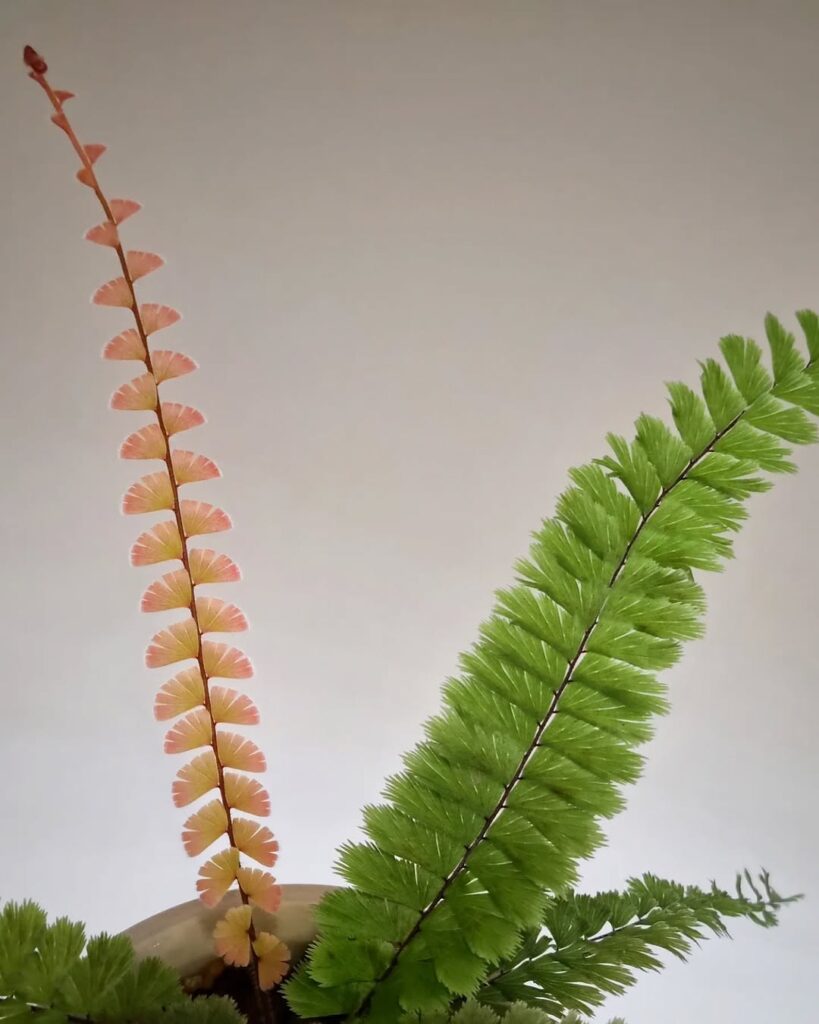
This tropical fern is native to Southeast Asia and the Pacific Islands, thriving in humid, shaded environments like rock crevices and forest slopes. It grows 10–40 cm tall, with short, erect rhizomes densely covered in brown lanceolate scales. Preferring moist, well-drained soil, it flourishes in high humidity and is often found in epilithic habitats.
Adiantum monochlamys (Hakone Maidenhair Fern)
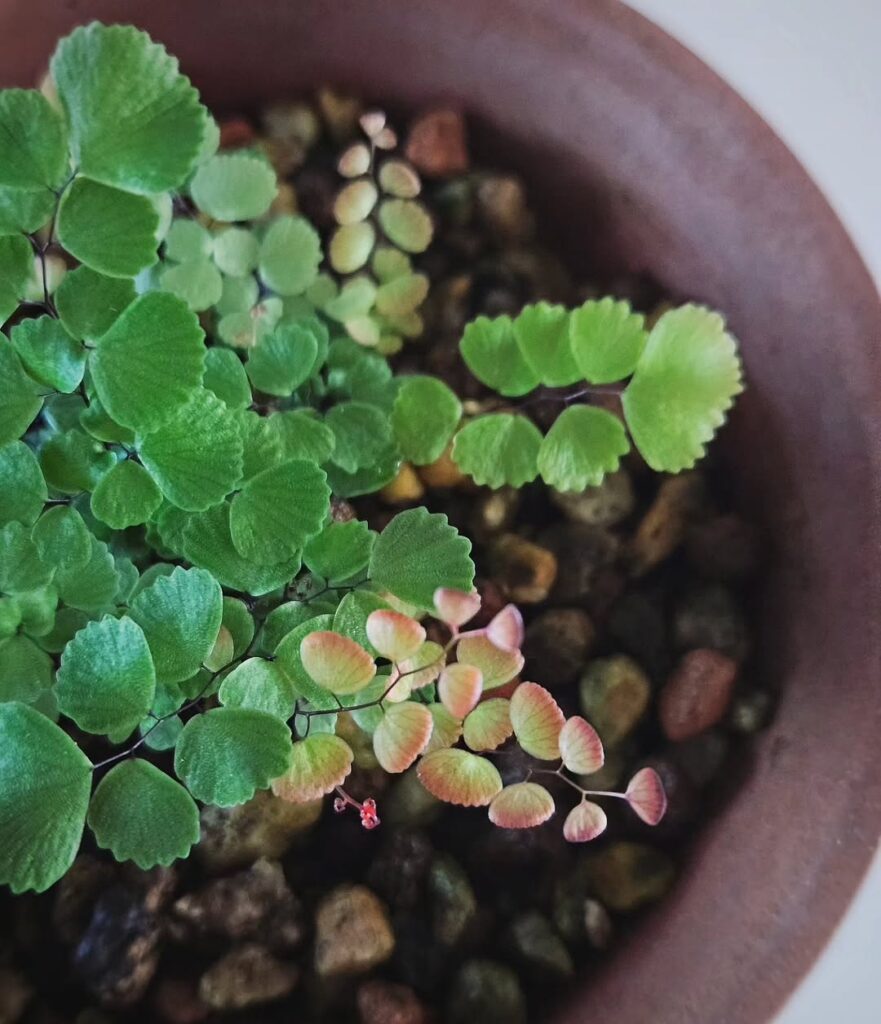
This evergreen perennial fern is native to Japan, Korea, China, and Taiwan, thriving in rocky, shaded environments. It features three-pinnate compound fronds with serrated leaf margins, supported by thin, black, stiff stems. Often found in mountainous regions, it grows in damp rock crevices, forming a cascading, delicate texture. Historically, it was collected in Hakone, Japan, and used as a pre- and post-natal herb.
Adiantum pearcei (Pearce’s Maidenhair Fern)
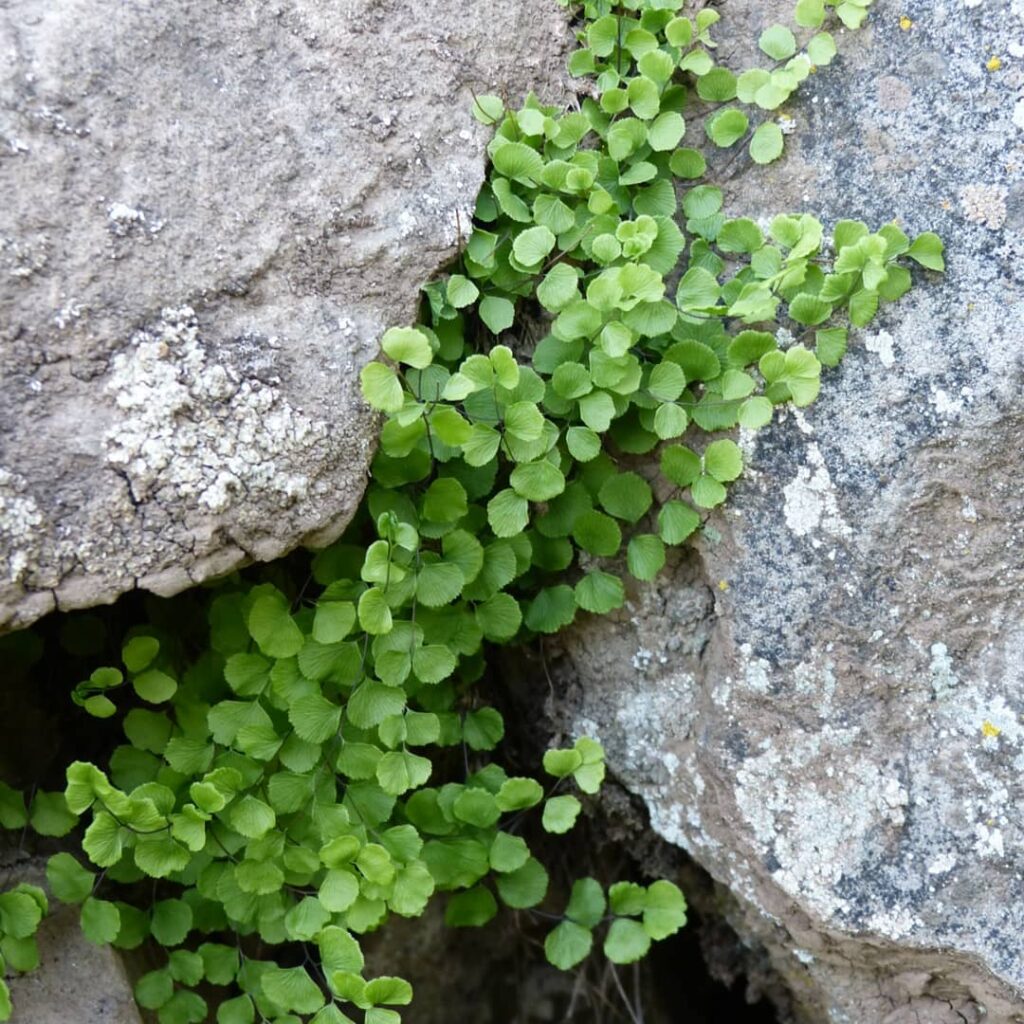
This endemic Chilean fern thrives in montane environments, often found in rock crevices and shaded slopes. It features delicate, pinnate fronds with suborbicular-reniform leaflets, supported by thin, dark brown stems. The sori are reniform and positioned along the upper margins, with membranous indusia. Preferring moist, well-drained soil, it is adapted to semi-arid conditions, making it unique among maidenhair ferns.
Adiantum philippense (Walking Maidenhair Fern)
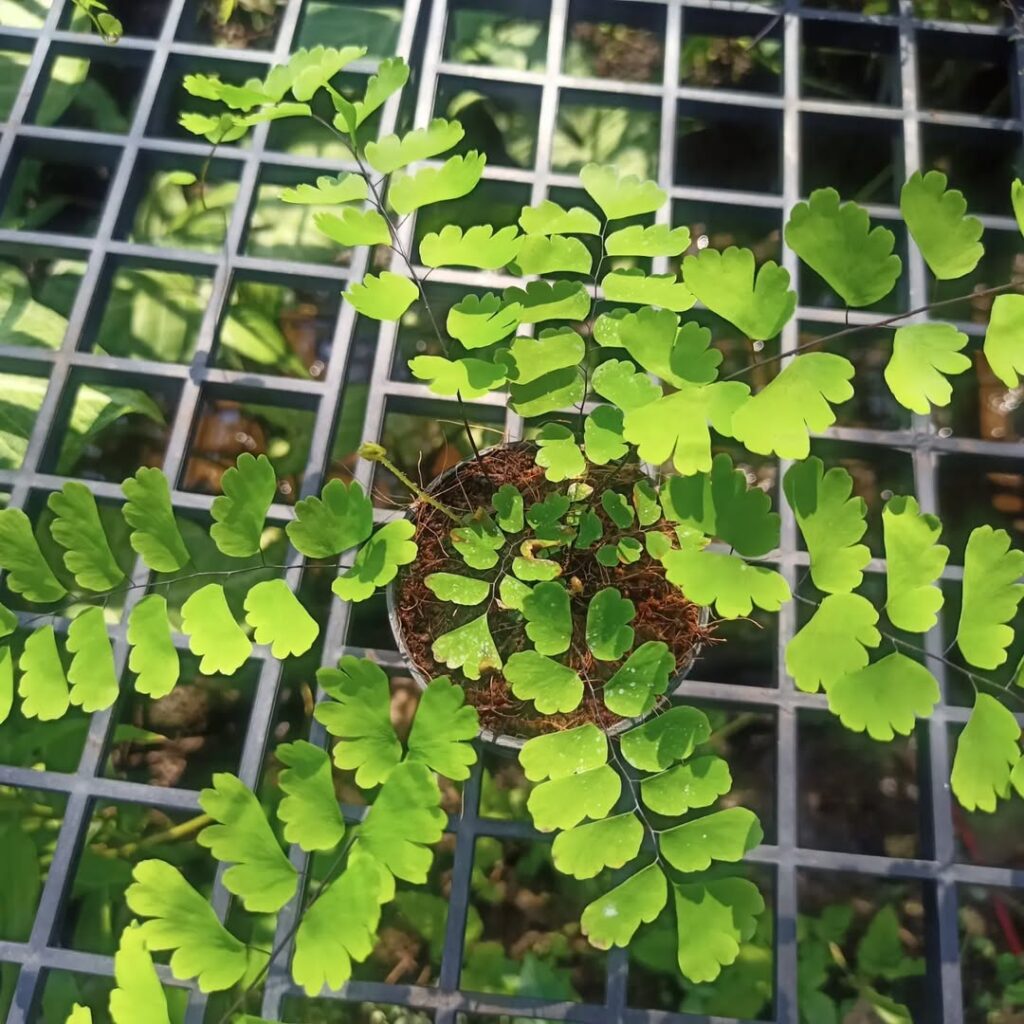
This widely distributed fern thrives in tropical and subtropical regions, including Asia, Africa, and Madagascar. It features arched, tufted fronds with a smooth, glabrous texture, often growing on streambanks and rocky forest floors. Historically, its taxonomy was debated, with some authorities using the name Adiantum lunulatum due to its half-moon-shaped pinnae.
Adiantum poiretii (Poiret’s Maidenhair Fern)
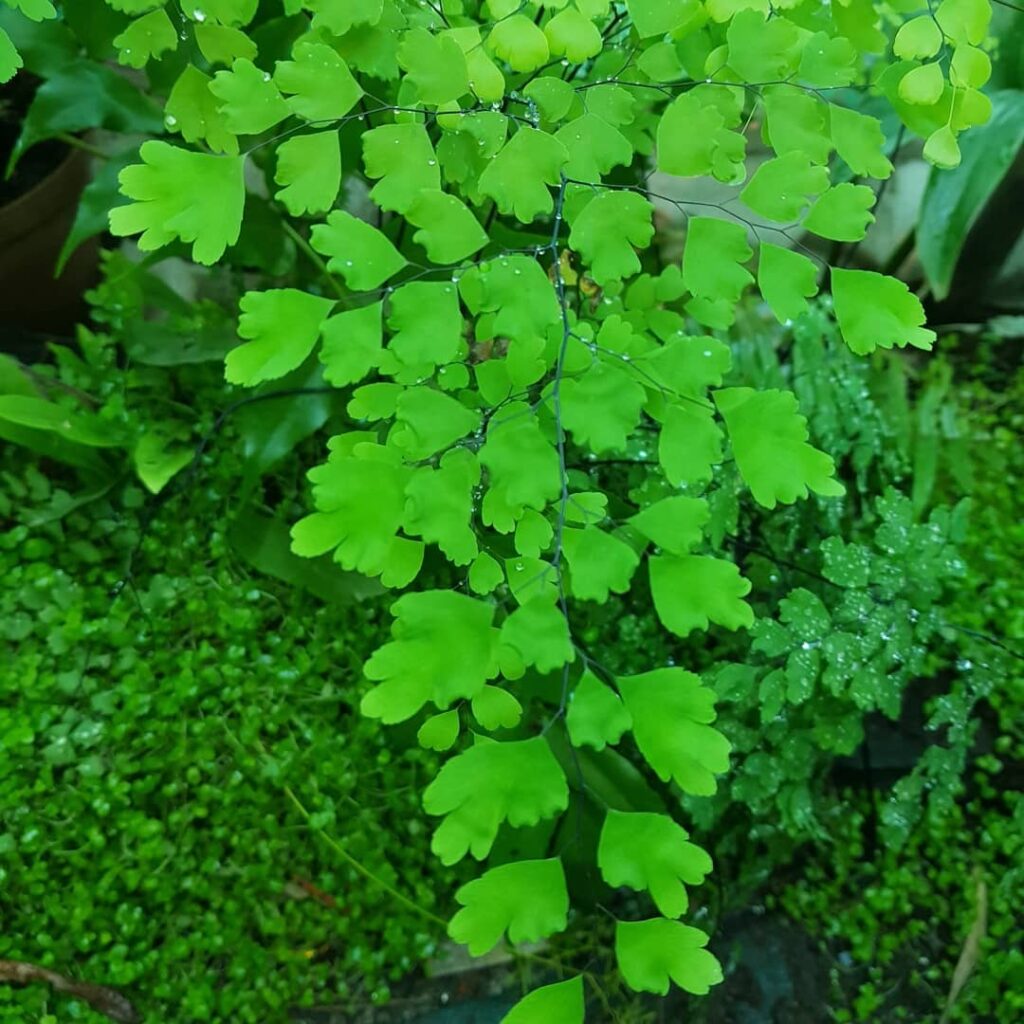
This deciduous fern is native to tropical and subtropical regions, including Africa, Asia, and the Americas. It thrives in moist, shaded environments, often found along streambanks and forest floors. Featuring delicate, fan-shaped fronds with dark wiry stems, it is commonly used as an ornamental plant and has applications in traditional medicine. Preferring high humidity and well-drained soil, it can be propagated by spores or division.
Adiantum reniforme (Lotus-Leaved Maidenhair Fern)
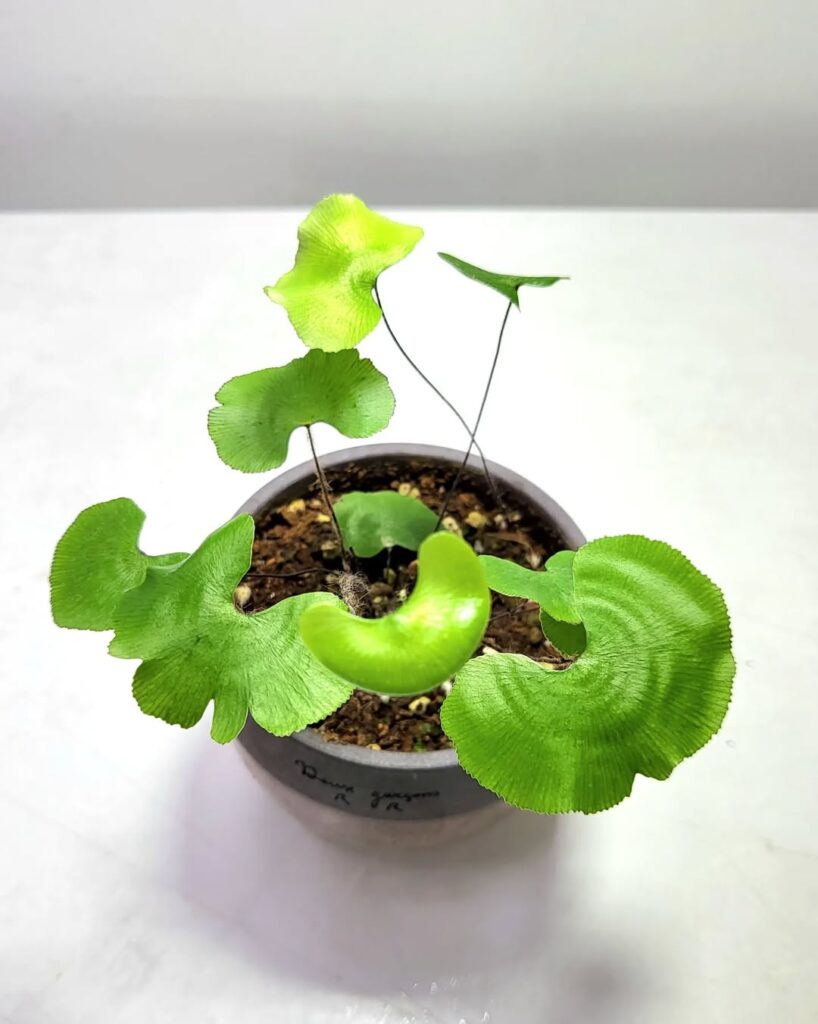
This unique fern is native to East Africa, Madagascar, the Mascarene Islands, Comoros, and Macaronesia, thriving in sheltered rock crevices and walls. It features large, round, dichotomously veined fronds with a narrow red edge, marking the presence of marginal indusia on the underside. Two recognized varieties include Adiantum reniforme var. reniforme, found in the Canary and Madeira Islands, and Adiantum reniforme var. asarifolium, occurring in continental Africa and the Indian Ocean islands.
Adiantum silvaticum (Forest Maidenhair Fern)
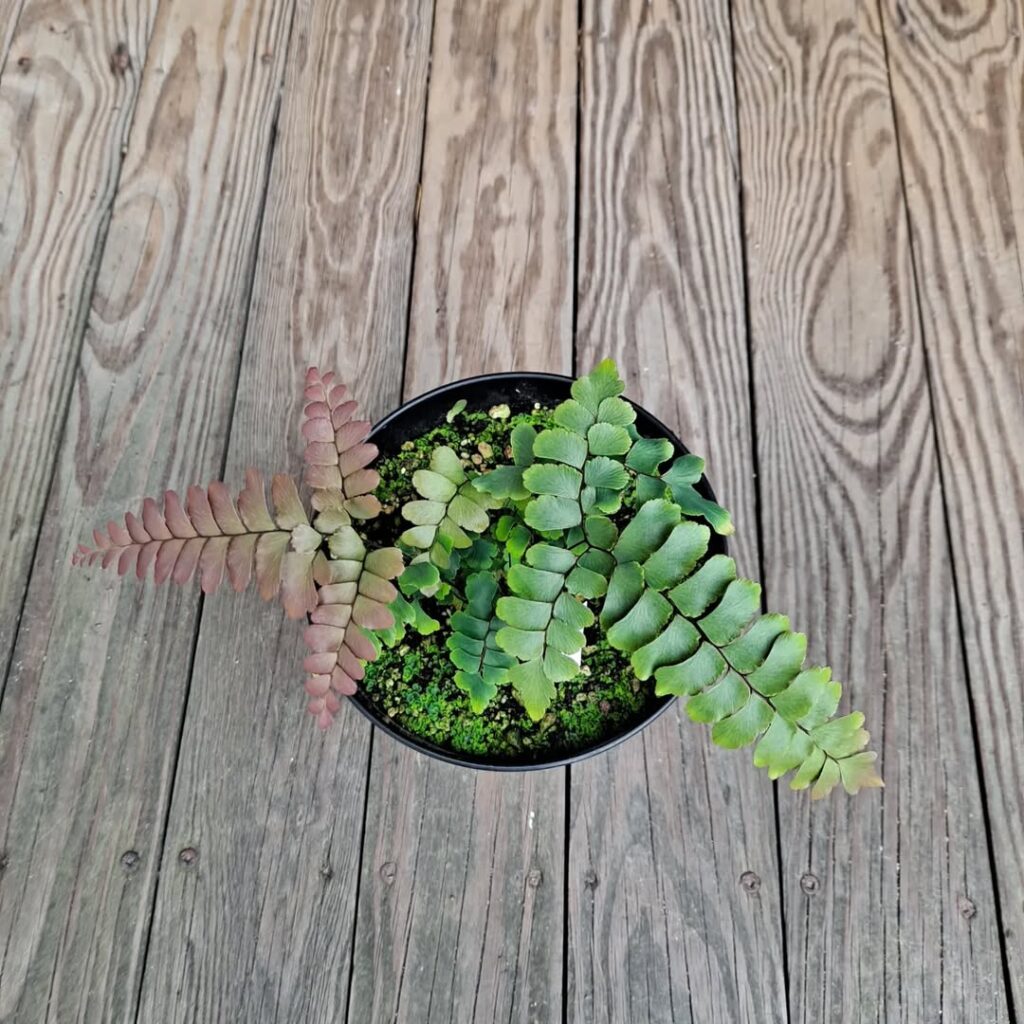
This Australian-native fern thrives in rainforests and moist eucalyptus forests, often found along streams and cliff faces. It features bright green to bluish-green, bipinnate or tripinnate fronds, growing up to 80 cm tall, with glossy black or dark purple stems. The new growth emerges nearly black, transitioning through deep purple to pink before maturing.
Adiantum soboliferum (Soboliferous Maidenhair Fern)
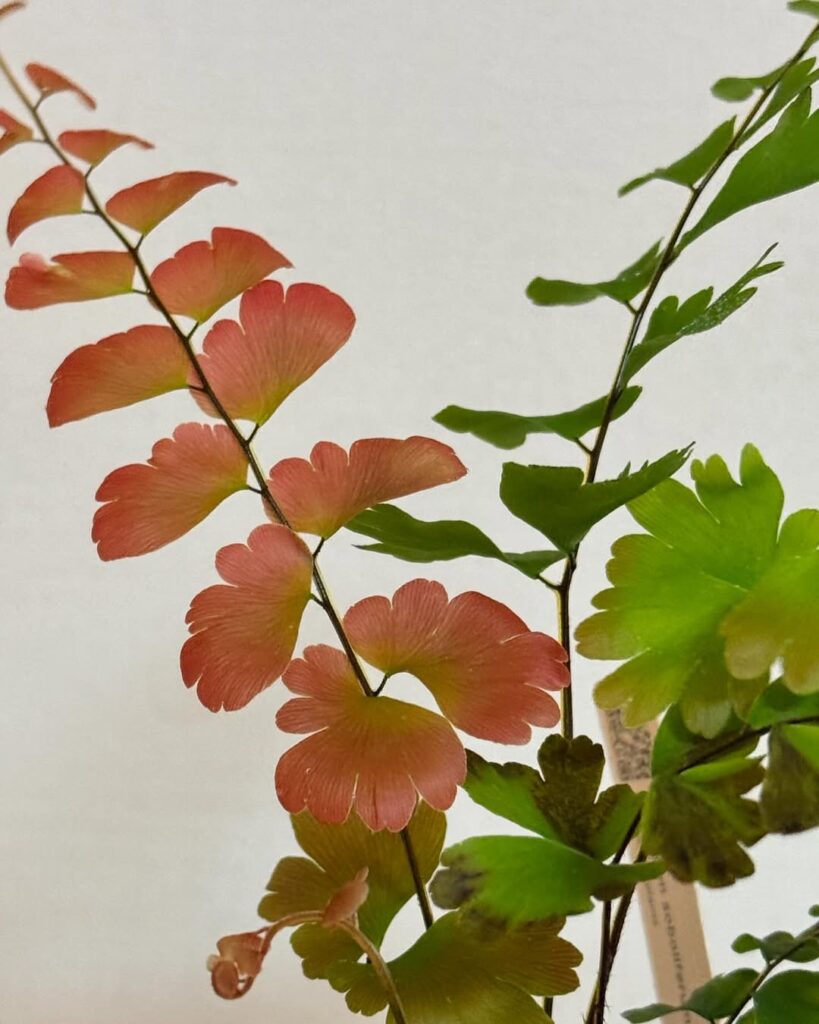
This tropical fern is native to India, China, Taiwan, and Southeast Asia, thriving in moist, shaded environments like rocky forests and streambanks. It features dimidiate, oblong leaflets with deeply lobed upper margins, supported by dark brown to black, shiny stipes. The sori are green when young, positioned along the upper margins of the pinnules. Preferring high humidity and well-drained soil, it is commonly found in deciduous and evergreen forests.
Adiantum tetraphyllum (Four-Leaved Maidenhair Fern)
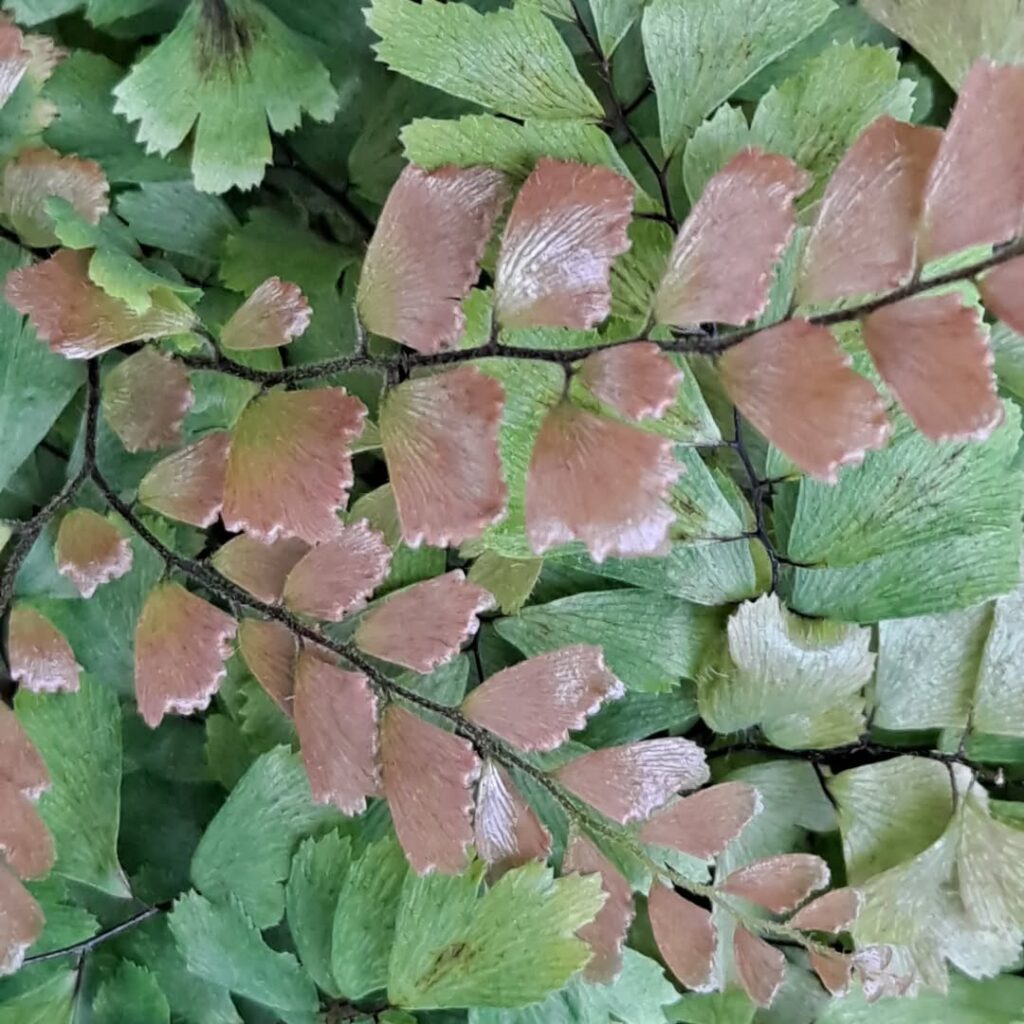
This perennial fern is native to South America, thriving in moist soils near streams and wet meadows. It features tufted, long, lacy, evergreen fronds, making it a popular ornamental plant. Traditionally, it has been used in medicinal applications, and it propagates through spores or rhizome division.
Adiantum thalictroides (Meadow-Rue Maidenhair Fern)
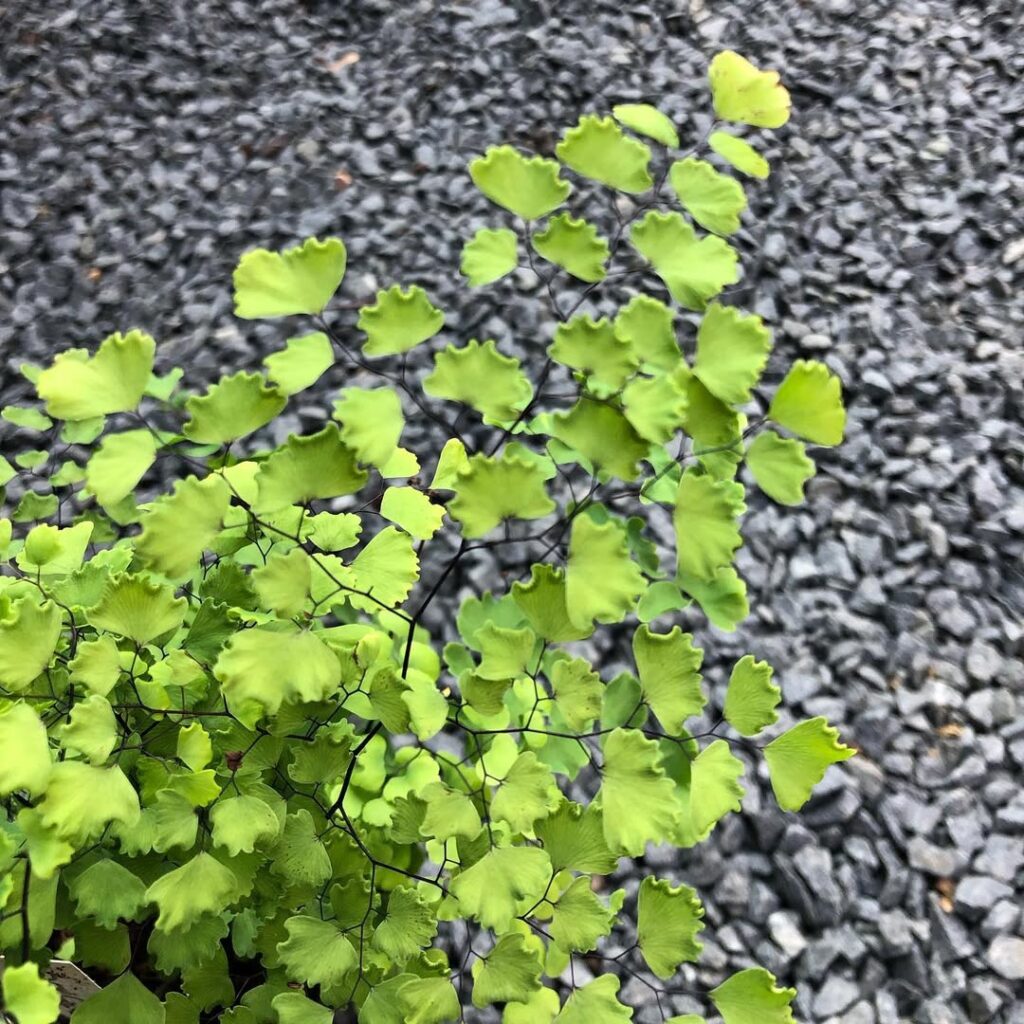
This Argentine native grows up to 2 feet tall, featuring black arching stipes dusted with pale yellow hairs. Its bright green pinnules have sori covered by a rolled flap of leaf tissue, resembling an indusium. Thriving in light shade with humus-rich, well-drained soil, it requires consistent moisture and benefits from mid-winter pruning when dormant.
Adiantum tricholepis (Fuzzy Maidenhair Fern)
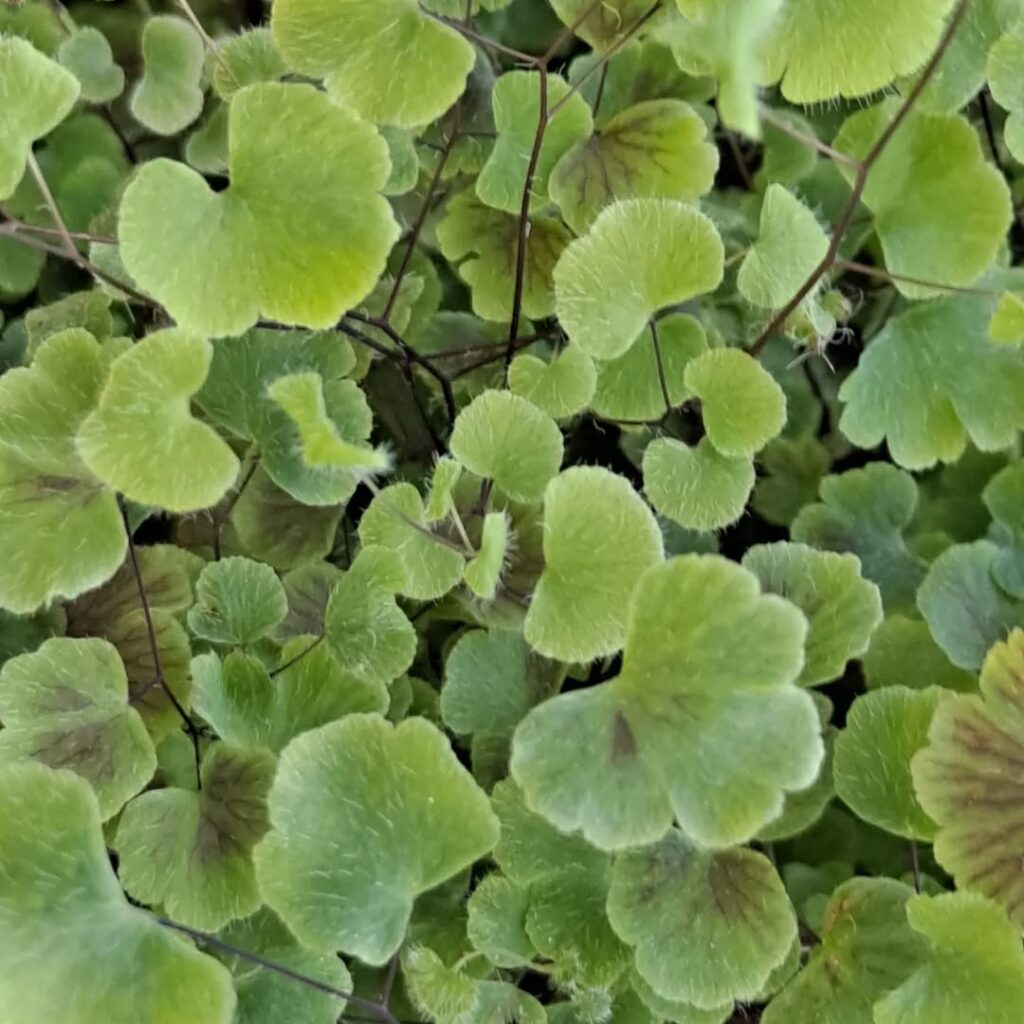
This distinctive maidenhair fern forms gracefully arching or pendulous clusters of fronds, with hairy ultimate segments, an unusual trait for Adiantum. It thrives in moist, organic-rich soil but can tolerate drier conditions, often found on limestone cliffs, boulders, and steep slopes. The fronds are ovate and pinnate, with dark reddish-brown scales along the short-creeping rhizomes.
Care Guide for Maidenhair Ferns
Maidenhair ferns are delicate but rewarding to grow. Here’s how to keep them thriving:
- Light: Provide bright, indirect light or dappled shade. Avoid direct sunlight, which can scorch their delicate leaves.
- Humidity: These ferns love high humidity. Keep them in a humid environment or use a humidity tray. Bathrooms and kitchens can be ideal spots.
- Watering: Keep the soil consistently moist, but never soggy. Use lukewarm, filtered water to prevent leaf damage.
- Soil: Use a well-draining, peat-rich potting mix to retain moisture while allowing air circulation.
- Temperature: They prefer warm conditions, ideally between 65–75°F (18–24°C). Avoid cold drafts or sudden temperature changes.
- Pruning: Trim away any yellow or dried-out fronds to encourage fresh, healthy growth.
- Propagation: Divide the rhizomes gently in spring to create new plants. They don’t grow easily from spores, so division is the best method.
With the right care, maidenhair ferns can be lush, vibrant, and absolutely stunning in any indoor or shaded garden space. Their delicate fronds bring a soft elegance to their surroundings, making them a beloved choice for plant enthusiasts.
